






Issue Nine freelancer For a freelance life less ordinary MAGAZINE
Freelancing Creativity & Design A NNIVE R SARY E d i tion
The Art of


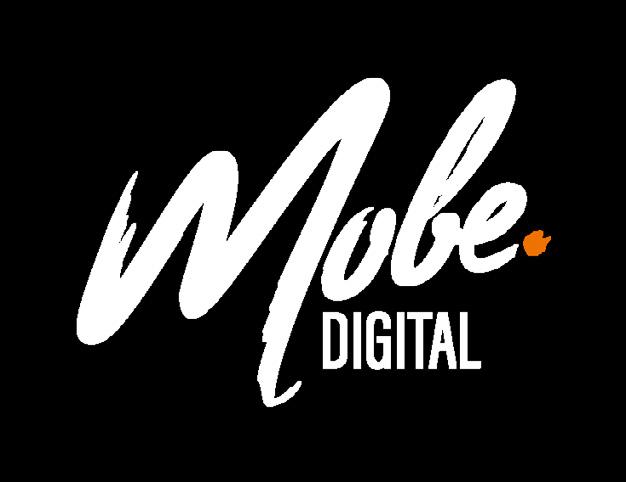
Digital Comms Strategy with the Queen of Inbound Barketing. You'd be woofing mad to miss out! www.mobedigital.com/freelancer-magazine/


DOES THIS MAKE YOU CRINGE? US TOO. 90% off limited offer $49! bag it quick! 93 people currently looking at this offer Only TWO available! was $3,000 now offer ends - 4 minutes That’s why we’ve formed The Ethical Coaching Company. We are committed to providing high-impact, heart-led coaching for you and your business. theethicalcoachingcompany.com BE THE CHANGE YOU WANT TO MAKE
Doyou love making things?
I love making things. I love making things badly, I love making things I have no business to be making. I love making things on my own, I love making things with others. I love making biscuits, I love making macramé plant hangers, I love making marketing plans, I love making friends, and I love making a magazine. Until a few years ago, I didn’t think I was creative. I thought to be creative meant you had come out of the womb being able to draw like Amy Nolan (page 10) or make music like Miguel d’Oliveira (page 30). I think one of life’s greatest sadnesses is that we put off making things for fear of what others will think or until we have everything we need to make a perfect start.
I hope this, our second anniversary edition of Freelancer Magazine will show you that everyone started at the beginning, other people don’t care what you do, 99% of folk are unbelievably supportive (the other 1% are just jealous), and you already have everything you need to make something.
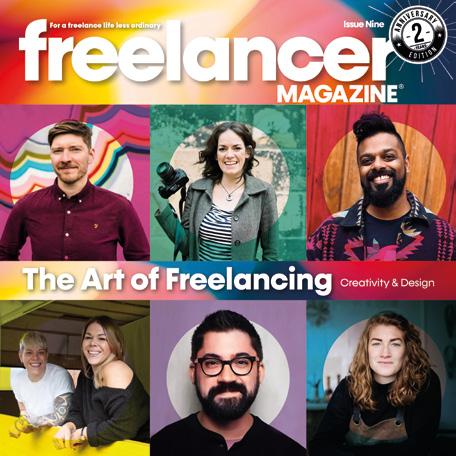
So here’s to making things. Making things out of nothing. Making things that you can charge money for. Making things for pure pleasure. Making things that work. Making things that don’t work. Making things that make your heart sing. Making things that create connection. Making moves. Making your wildest freelance dreams come true.
Sophie x
Issue 9 - The Art of Freelancing
We’ve made you an especially curated playlist for this issue, so grab a coffee, sit back and put on the tunes while you read. Open
You can scan the Spotify Code using the Spotify app to listen to the playlist.


4 Freelancer Magazine
Search Scan n
Cover image credits:
Austin Kleon – Clayton Cubitt
Zoë Wilson – Emmie Finn
The Freelancer Magazine Team
Sophie Cross Editor
Long-haired LinkedIn lover (not from Liverpool) /sophcross


Angela Lyons Creative Lead Random conversationalist & collector of colourful things /angelalyons1

Penny Brazier Features Writer

Former rock aerobics instructor & eyeshadow genius @penthemighty
Mel Barfield
Features Writer
High-maintenance writer & low-maintenance mother @allcopymel
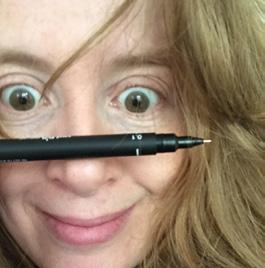

Jo Watson Columnist
Unbeatable winner & unbearable loser /jo-watson-agoodwriteup
Peter Komolafe Money Expert

Author of a brand new book @conversationofmoney
Ed Callow
Features Writer
Wunderkind, visionary, dreamweaver
@edcallowwrites
Abi Sea Features Writer


Clumsy oaf & admirer of trainers
@thelaunchlifeline
Amy Nolan Doodler
Marmalade fancier & cloud gazer
@inkypix4u
5 Issue Nine // Spring 2023
8. YOUR MESSAGES
10. THE FREELANCE DOODLER
12. WATER COOLER
18. A DAY IN THE LIFE OF… ADAM FAULKNER


22. SO YOU WANT TO BE A… STONE CARVER?
26. PHYSICAL HEALTH: PHYSICALLY (RE)MOVING YOURSELF
28. MENTAL HEALTH: WHAT’S THE DEAL WITH OUR DISAPPEARING FOCUS?
30. DO GIVE UP YOUR DAY JOB WITH COMPOSER MIGUEL D’OLIVEIRA

36. FAMILY: FROM BIN MAN TO ROCKET MAN
40. MONEY: FOLLOW YOUR DREAMS
42. HOW DO I… ORGANISE AN EPIC EVENT?
46. MAKE TIME EVERY SINGLE WEEK TO DO SOMETHING THAT MAKES YOU SMILE LIKE A SUGARED-UP TODDLER
52. DO I NEED A… PERSONAL BRAND?

56. DOES HAVING A CREATIVE OUTLET MAKE YOU A BETTER FREELANCER?
60. HOLD ME CLOSER, TINY GARDENER
62. NEWSLETTER LOVE
66. FOOD: THE DEAF CHEFS
70. COWORKERS
72. FREELANCER STATS
74. TOP OF THE SHOPS
78. WHAT WE’RE LISTENING TO, READING, LEARNING
freelancer CONTENTS
22 18 52 30 A NNIVE R SARY E d i tion
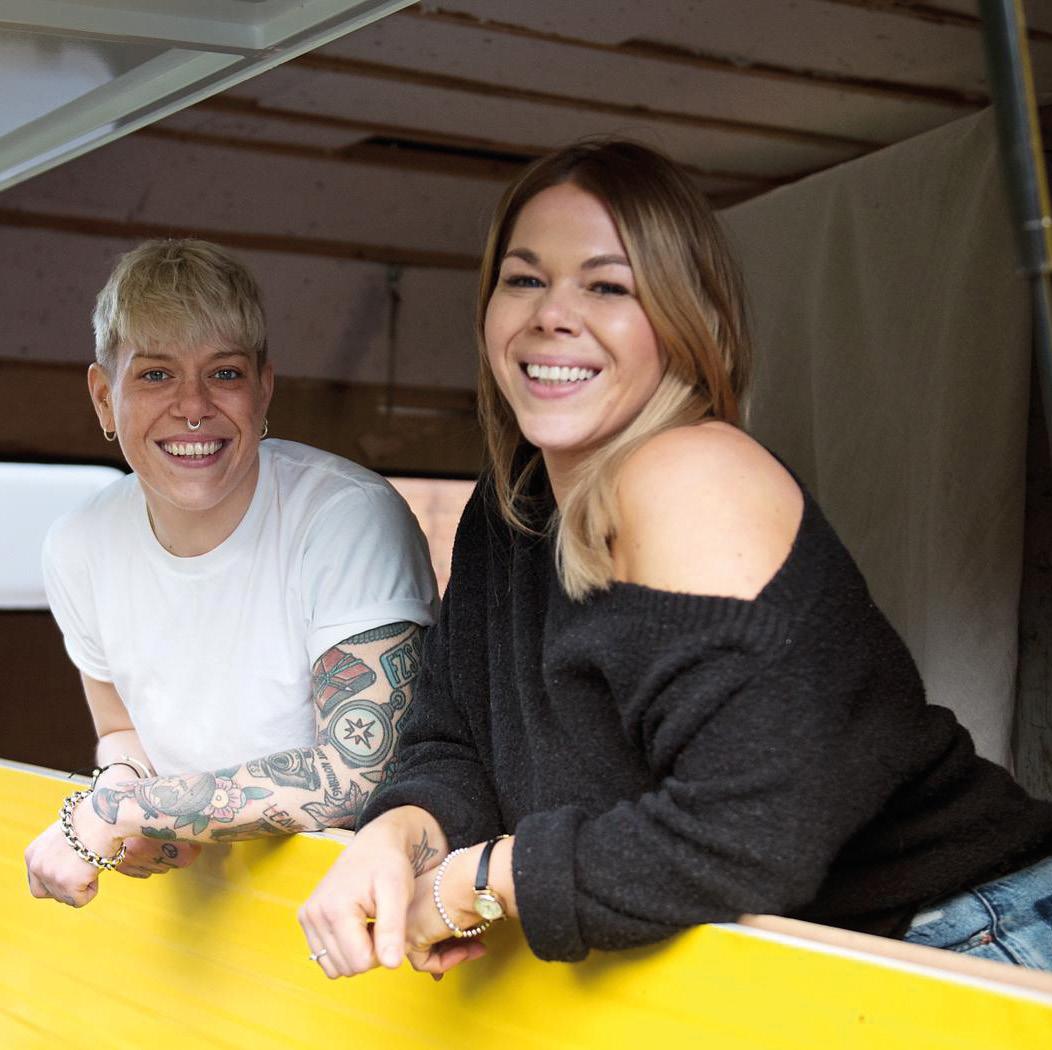

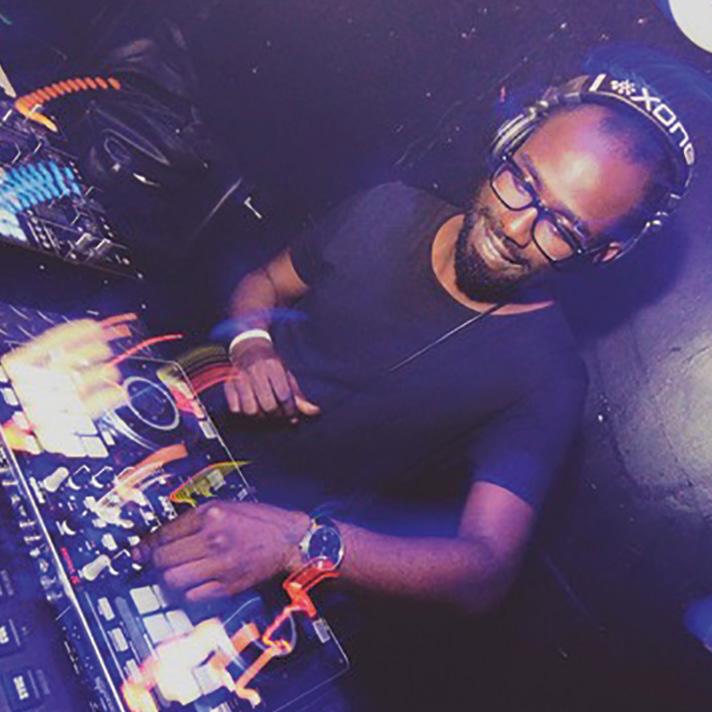

freelancer 66 62 82 95
82. FREELANCE MEET UPS
86. THE FREELANCER MAGAZINE BOOK CLUB WITH TOM ALBRIGHTON
92. ASK TWITTER: HOW DO YOU FEED THE CREATIVE IN YOU?
94. FREELANCER MAGAZINE EVENTS: THE BIG CHRISTMAS PARTY, UK ROADSHOW AND VIRTUAL COWORKING
97. JO WATSON’S WE WERE ALL THINKING IT
98. COMING UP IN ISSUE 10
Thank you so much for all your emails and messages. Please keep sending them in and let us know what you want to see more of.
I’ve only received two copies of the mag so far, but I just LOVE it so much! Sitting down and reading it cover to cover feels like such a treat. In Issue 7, I enjoyed reading the stories of people that I follow on socials (like Eman and Sarah), and the honesty of those who contributed to the article on passive income was refreshing and completely eyeopening! This magazine has given me so much already – new connections, fresh perspectives and best of all… inspiration. Thank you for bringing us all together in such a welcoming community, I cannot wait for my next issue to drop onto the doormat.
Jo Burton, Marketing Consultant & Content Expert
When my copy arrived, I posted in the Being Freelance Facebook group asking why I had never heard of this magazine. Cue an outpouring of love for this magazine, questions about where I had been hiding and a number of new connections made across all social media channels. I then spent the next 48 hours reading every inch of the magazine from cover to glorious cover. I also followed various contributors to the magazine on Instagram, who also followed me back. I think it’s fair to say that this magazine delivers on EVERY LEVEL!
Leisa Pickles, Sales Advisor
Always interesting to hear of the highs (and lows) of people who’ve chosen to digital nomad their freelancing life (Rachel Pilcher in Issue 8). My own foray into digital nomading was thrust on me after I was made homeless by floods of biblical proportions; so none of the usual glamorous international travel, but it was encouraging to recognise a lot of the themes from my having lived and worked out of three bags for the best part of a year, and always looking for the next sofa to crash on, plug socket, etc.
Adrian Ashton, Untypical Enterprise Consultant
I enjoyed reading “A Guide to Starting Your Freelance Business” in Issue 8 of Freelancer Magazine, hot off the press. It’s reassuring and a relief to know I’m getting some things right and I noted the areas I need to improve—particularly item 12, “Marketing Yourself”. Great checklist!
Deborah Harris, Executive Assistant
If you’re self-employed and haven’t subscribed to Freelancer Magazine yet… are you feeling ok?!
 Giada Nizzoli, Copywriter
Giada Nizzoli, Copywriter
8 Freelancer Magazine
Honestly, it’s the best thing I’ve read in my 21 years freelancing.
Wayne Sables, Filmmaker
Bill Hinchen, Science Copywriter • BillHinchenCopy.com
If you could steal a piece of art, what would you steal?
I love magazines, and this one is bright, beautifully designed and packed full of useful tips for freelancers from all industries.
Lauren McKay, Content Writer
So glad I subscribed - a delicious bit of sunshine landing through my letterbox!
Lindsey Russell,
Copywriter
Is it just me, or is it like every Freelancer Magazine contributor has been inside your head listening to you ramble on to yourself for the past two weeks?
Oh, that’s easy: Michelangelo’s David. Just the sheer accomplishment of stealing five metres (that’s 17 Freedom Units if you’re in the US) of marble, weighing around two elephants, and getting it from Florence, Italy, to somewhere in the middle of England in nothing but a clapped-out old VW Polo… Incredible stuff they’d talk about for years to come. I’d have it in my garden, next to this lovely little bird feeder I picked up right between the biscuits and industrial floor sanders at Aldi. Friends would come by and gawk at this colossal statue in my little garden. “Is that…?” they’d start.
“David?” I’d say – eyebrows raised in utter incredulity. “Is that Michelangelo’s David? The five-metre marble statue that weighs around two elephants? The one that’s in Florence? Ha! Of course not, you plonker. Sit down, enjoy your biscuit and watch the birds.” It’d be the perfect crime, really.
What was the best meal you ever had?
Steak with a side of lobster. I’ve never felt so decadent. I was in the Hawksmoor at Spitalfields in London with my wife. It was an anniversary. Unsurprisingly, we had steak. But I noticed on the menu, along with the usual sides like triple-cooked
chips (which always seem too cooked for me – why triple? Why not double?
Single? Or quadruple?!) and greens, was “Half a lobster with garlic butter”. Now, it may have been the pre-cocktails or the pre-dinner wine talking but I said, “I’ll have that!” .
“Are you really going to have half a lobster with a giant steak?” asked my wife.
“Yes. Yes, I am.” And it was glorious! Simple and excessive.
Did I feel a little sick afterwards? You bet I did. Was it worth it? Absolutely.
What’s been your work highlight of the year so far?
This is really cool actually because I’ve recently been asked to come and speak to young scientists about how to write about and generally communicate their science more effectively – to other scientists and the public. It’s a wonderful chance to take my decade or so writing about science in this weird industry and pass on something that, hopefully, amounts to wisdom. The goal is to have more people share the awesomeness of science. And honestly, I can’t think of a better way to spend my time.
Send your messages to editor@freelancermagazine.co.uk and you could win a Freelancer Magazine mug. The Issue 9 winner is Jo Burton.


9
Avid Reader Spotlight
Bill
/billhinchen
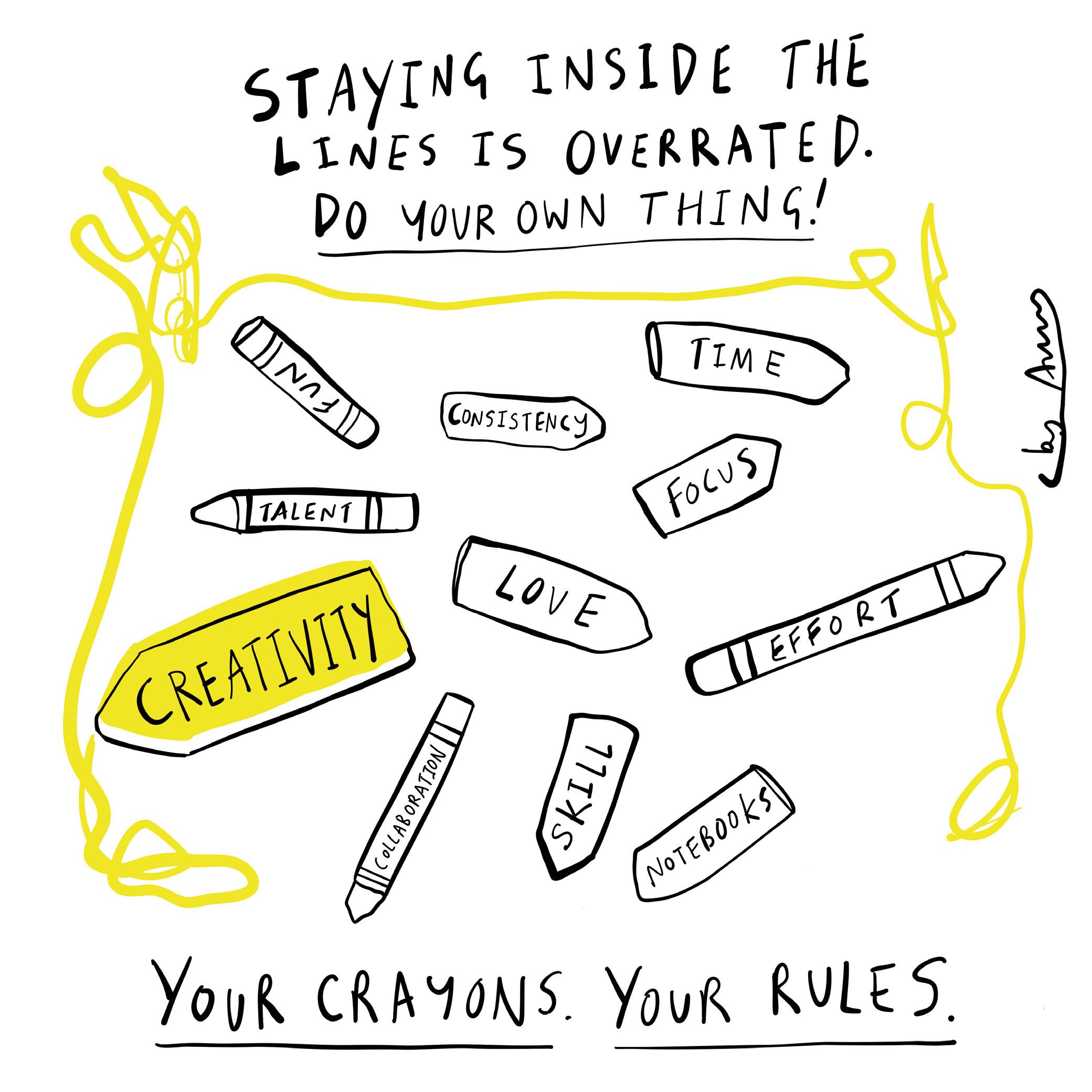
10 Freelancer Magazine THE FREELANCE DOODLER
Launch Launch
nnew ew website website Spring '23 Spring '23
BIG reveal BIG reveal advert advert eeeek! eeeek!
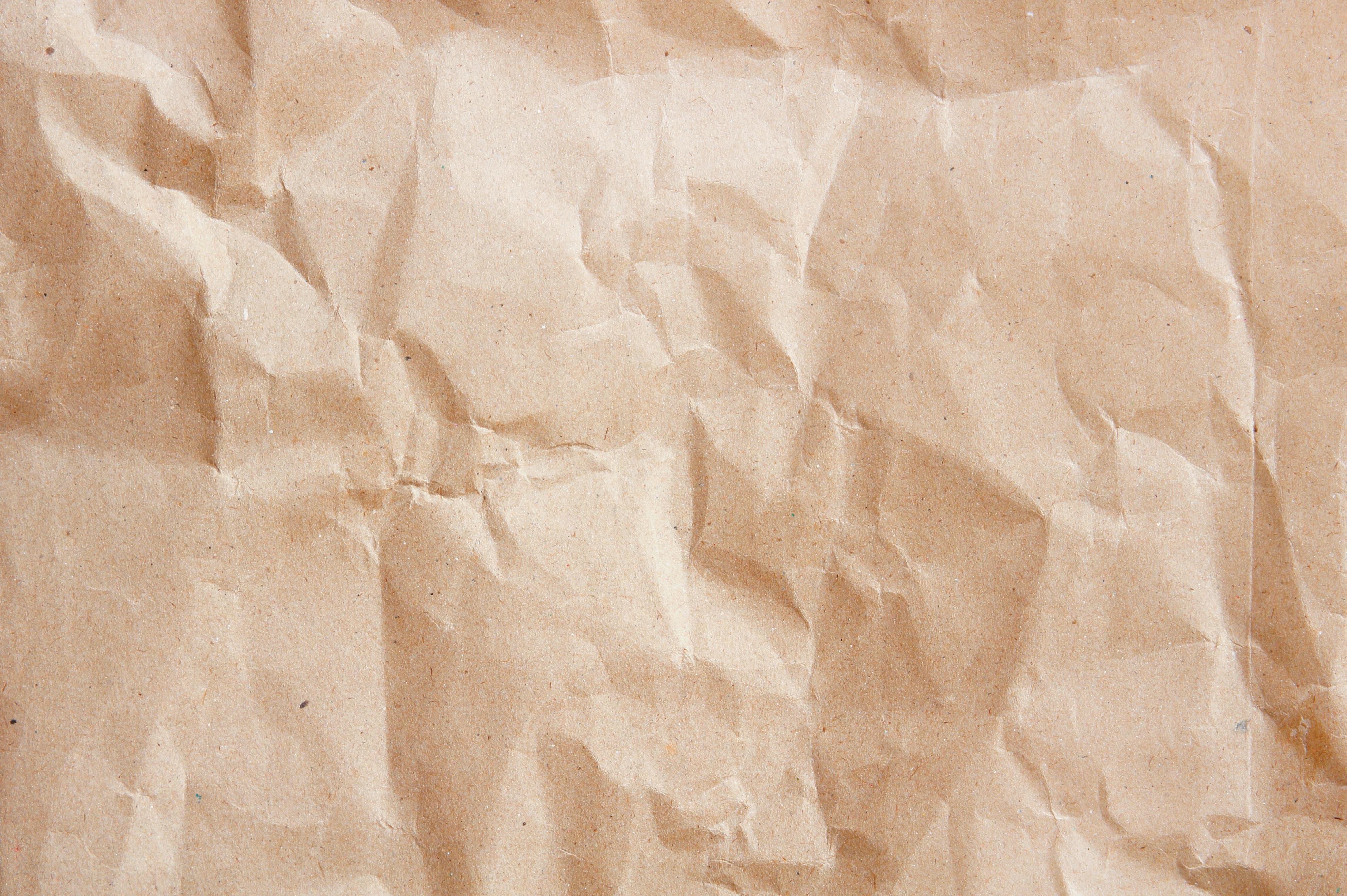
Launch Launch prize, prize,
new for hmhub
one winner one winner

P.T.O
Creativity
Since going freelance two years ago, I’ve found it’s very important to keep my creativity sharpened by taking inspiration from stepping away from my computer. Finding inspiration before designing is important. I’ve found that visiting galleries, book shops or even just going for a walk in town helps with my design process. This has increased my productivity as it allows me to balance my screen time with being outside in the real world. Ultimately, this way of working results in me producing better work and has a positive impact on my mental wellbeing.
By Kieron Lewis, Graphic Designer @kieronanthonyl
Dunk with us ��
The three most popular links from the latest Dunkers…
�� A useful guide for pairing fonts www.connary.com/pairing.html
�� The A-Z of things that freelancers don’t get paid for www.procopywriters.co.uk/2021/05/ato-z-of-things-that-freelancers-dontget-paid-for-and-other-benefits-welose-out-on
�� Brain sparks to help you get unstuck www.brainsparker.com/card-pickerstarter-pack
The Dunker is our weekly business and creativity newsletter, especially for freelancers.




Freelancer Magazine
www.freelancermagazine.co.uk/dunker
Subscribe at: WATER COOLER
Dunker
byfreelancer MAGAZINE
On
The Micro Column
The







NOW! Create your own packagewith a Hub Sub DigitalMedia and Marketing services Heather's Media Hub www.hmhub.co.uk Website launch celebration. One lucky reader has a chance to win a 90-minute digital marketing consultancy session with me. To enter quote FMSpring23 on the website contact form. enter by July 31st 2023
The Power of Words
Where I ♥ to Work
In the last year, coworking at Clockwise has significantly boosted my wellbeing and business productivity. The Exeter office has a warm and vibrant community, its own cafe and regular events from quiz nights to yoga. Based in leafy Southernhay, it’s the perfect location for lunchtimes and attending city networking events.
Tilly Lander Williams, Copywriter @moorheartcopy
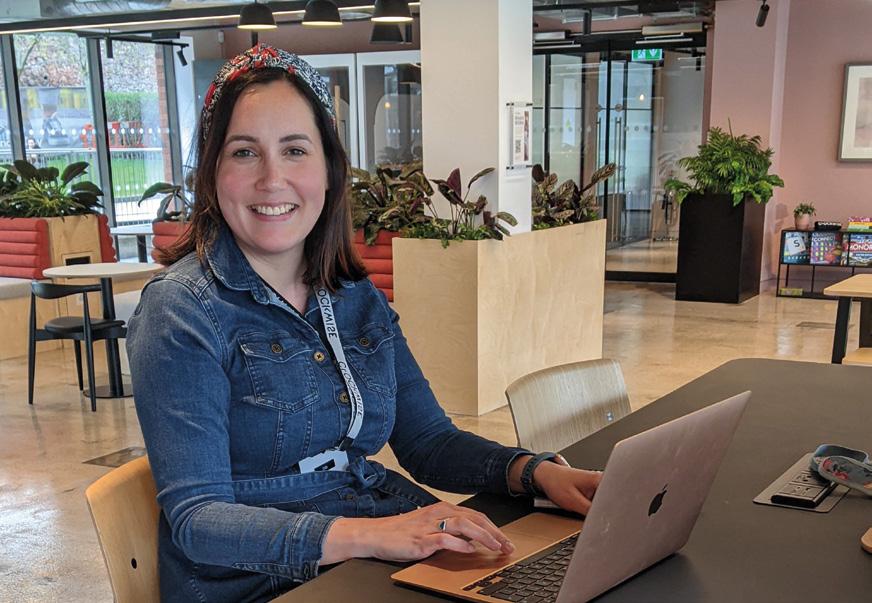
Three Tips Deaf Awareness & Accessibility
Ahmed Khalifa is an experienced digital marketer and a huge advocate of deaf awareness, sign language and web accessibility. He is also deaf/hard of hearing, has been since birth and wears hearing aids. Ahmed shares the challenges and situations he’s faced on his website HearMeOutCC.com Ahmed works with companies and creators to be more deafaware when making videos but also to demonstrate that a wide variety of people will benefit from closed captions, which can then attract more exposure and engagement to your videos.

1.Ask, don’t assume Deafness is a spectrum, and what works for one won’t necessarily work for another. The best thing to do is to ask what can be done to make a conversation easier and work together to resolve that. For example, booking a sign language interpreter is pointless if a person doesn’t communicate in sign language.
2. Have good lighting
Whether it’s in-person or virtual, whether it’s oral language or sign language, good lighting is crucial in order to follow a conversation. So make sure you are in a well-lit room so that your face is clearly visible. It can also help a person to lip read (provided that the lips are not hidden behind a thick moustache).
3. Use a microphone
For those who depend on oral communication, having poor-quality microphones and sound (plus noisy backgrounds) can affect communication and hinder the quality of the auto-captions. And that includes using those built-in microphones in the laptop, which are known to emit poor-quality sounds. Everyone can benefit from good quality sounds during a video call, not just those who are deaf or hard of hearing, so consider investing in a simple microphone - it doesn’t need to be expensive.
14 Freelancer Magazine
Find Ahmed Khalifa on LinkedIn and Twitter @IamAhmedKhalifa.
“Don’t wait. Just make the thing. Make a version, and then make it better and then make it better.”
Ira Glass
WATER
COOLER
Write a blog, they said...






“Yes, I know a blog would be great for my business, but I’m so busy running things. When am I supposed to find the time?”
Sound familiar? I’m Donna Edwards, and I write engaging blogs, articles and newsletters for busy business people just like you.
Need help? Call me on 01827 426147 or email donna@wordsbydonna.co.uk


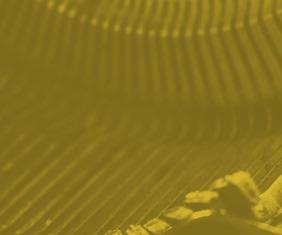



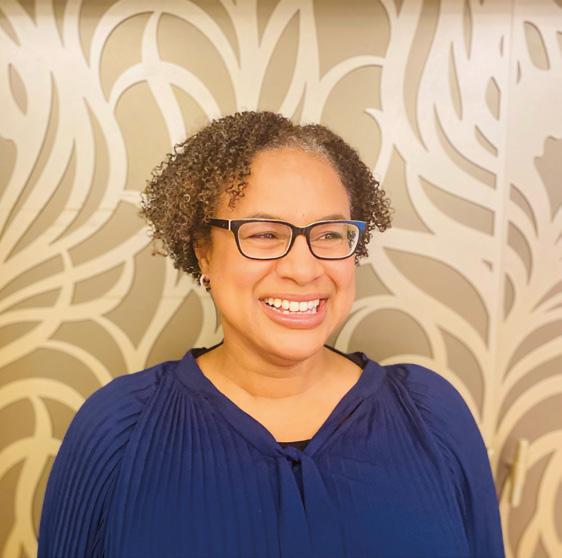








16 Freelancer Magazine @andygoldmancopy @depesando @martinamenzini @paulashuttmarketing @podcast.stack @samuelfoneill @stephanie.gotfryd_design @dansyder @laurawhitehousedesign #FreelanceLifeOnTheGrid WATER COOLER Our favourite freelancer pics from the Gram.
1.Howtocreateanirresistibleofferthatwillhave people itchingtobuy
2.Abulletproofcopywritingmethodthat'sbuilt to haulin qualifiedenquiries
3.Howtouseemailmarketingtogetleadsand make salesonautopilot
4.Aselectionofformulaeyoucanuse togenerate interestinyourbusiness quicklyandeasily
5.Howtoshowthatyourbusinessisnotjustthe best…but theonlyoption
Wantmoreclients? Extraordinarynewbookfrom Yorkshire marketing expertreveals
5copywritingsecrets
Limitedstock-visitthebelowlinknowformore information www.copywritingforsales.co.uk/book Advertisement
A Day In The Life Of... Adam Faulkner
What do you do?
I run a production company aptly named Creative AF. It provides video and audio production rolled into one. That’s my niche.
Where are you based?
I live in Belfast, I have a studio in Manchester, I spend a lot of time in London - that’s my triangle. I’m always on the move.
How long have you been doing what you do now?
Three years. I decided to start my own business, and then Covid happened about two weeks later. But it gave me time to think. I had about £400 and was living with my mate (who had lost all his work too) so we

built a bar in the garden, and I started making videos of him making drinks. It was legal and fun. The first client I got was Sipsmith Gin (I still work with them). I didn’t have a website or portfolio but I knew someone who worked there, and they saw the stuff I’d made with my friend. Your network is everything. Tell everyone you know who you are and what you do.
What were you doing before?
My career before was as a national newspaper journalist and then a TV producer, both in London. I left that job and went travelling for a long time on my bicycle. I cycled from London to Tokyo.
As an ex-journalist, it helps me not to care too much about what people think - I’m going to go after it.
I get up at…
7.30am
I won’t get out of bed for less than…
I wake up every day with renewed optimism, believing there’s opportunity there, wanting to make something happen today and to open doors for myself - feeling ready.
My go-to breakfast is…
I don’t eat breakfast; I fast. I try to only eat between 2pm and 8pm. I do some exercise, and I work best in the morning; I feel very alert.
18 Freelancer Magazine
My go-to lunch is…
If I have lunch, my energy levels slump so I’ll only have lunch when I’ve done the bulk of the work. When I’m directing on shoots, I have to be efficient and get people going again and again. There’s no messing around. I’ve been told I get twice as much done as most.
A typical working day might look like…

It depends on whether I’m out on a shoot or on location, at home or in my studio. If I’m not on a shoot, I get up, exercise, walk to my cowork space in Belfast and work solidly doing all my projects and calls. At 2pm I enjoy my lunch. I go hard in the morning but the afternoon is more relaxed: tying things up, then I’ll do more exercise to clear my head out.
You’re pretty prolific on LinkedIn. What’s your strategy? We’ve heard you mention a Power Hour.
I use LinkedIn in a more strategic way now. I don’t really pull any punches on there. I’ve spent time working out the types of things I should post, and I’ll write a long list of ideas when they come to me.
I’ll spend a two-hour session writing up as many of those posts as I can, and on a Friday
morning, I’ll schedule all the posts for the next week. Then every weekday morning at 8.30am, a post goes out and I spend half an hour engaging with people who have engaged with my post and commenting on about ten other people’s content. Then I’ll put it away.
If I put myself out there and don’t sit on the fence, people relate to that. I never spread hate, but it’s good to have an opinion. I talk about the things I’m passionate about. If I just post about my work, it’s not as engaging. I have a presence; people know who I am. They think about me, and then they think about the business.
19 Issue Nine // Spring 2023
>
“Tell everyone you know who you are and what you do.”
A Day In The Life Of...

LinkedIn is a good community; I enjoy it. It’s changed, and it’s changing. I’ve met lots of good people because of it - it’s a great networking platform.
In my opinion, it should be a vital part of any individual’s marketing strategy. Marketing yourself only works if you put yourself out there. People might come back to you weeks, months, or even years later.
Be honest, don’t worry too much about what others will make of it. It’s an opportunity to show people who you are and share your passions. Make it relatable to your work and business, and you’re laughing. Get creative with how you tell stories - shout about who you are every day without shouting about who you are every day.
After work…
I like running and I go to the cinema a lot. I don’t watch too much TV, but I might spend an hour watching something I really want to watch, and then I’ll read before I go to sleep.
I find cooking very cathartic and I’ll eat anything. If I go out for dinner with my girlfriend Alice, she’ll always choose what we have and we’ll split the dishes. I read ‘The Paradox of Choice’ by Barry Schwartz about how choices are everywhere and
it’s overwhelming. I like a few routines to reduce the decisions I have to make so I can think about business and creativity where I need to make good decisions.
The best part of my day is…
I’m a morning person. I feel very energised and optimistic. At about 8.30am, just before I start work, I’ll have a coffee and that’s the point I’m at peak optimism and anticipation. It feels like anything could happen.
The part I’d happily hire someone to do is…. I have an accountant and I outsource things on projects but in general, I enjoy doing the work and getting the work.

I wish I could…
Sometimes I wish I could have another person to bounce ideas off.
What I’m excited about right now….
I’m proud of hitting three years freelance. It’s a solid amount of time to build trust and hype and I feel that I have a good solid base to take the business into the future and grow further. I feel established which means a lot to me because it wasn’t easy.

20
Words to live by on a day-to-day basis… You’ve always got the ‘no’, you might as well try and get the ‘yes’. If you just sit at home, no one’s going to knock on your door. I don’t mind a ‘no’; at least they now know who you are.
Don’t wait for things to happen; most things don’t. You might as well go out there and make something happen; it feels incredible when you do, and it’s not nearly as big a risk as you think it is.

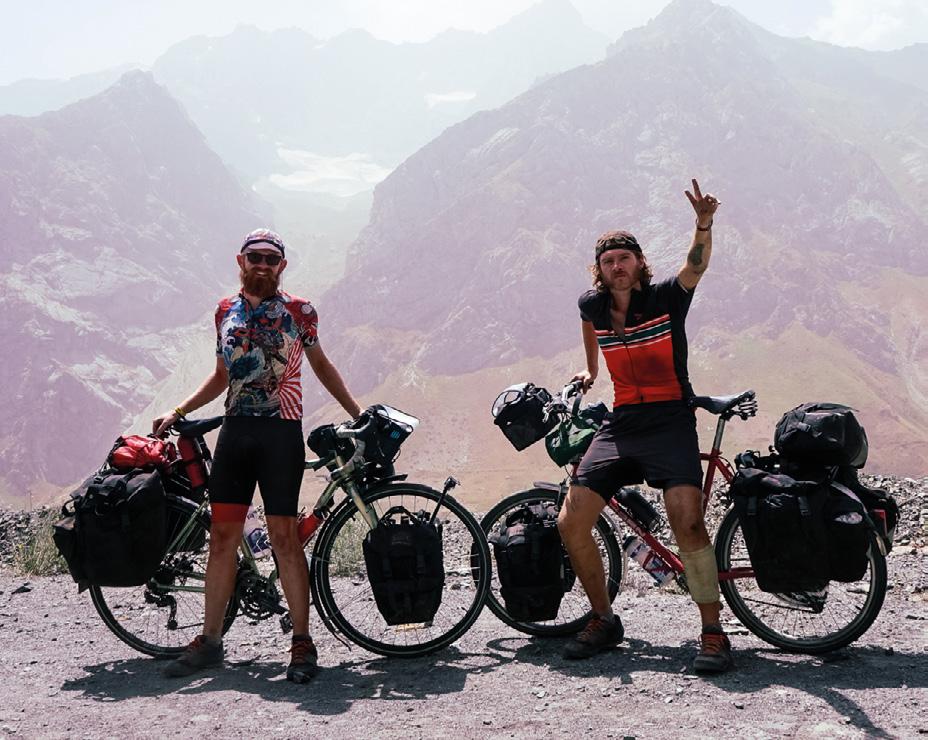
I design for you and your clients. I create and manage user-friendly website design, eye-catching marketing material, branding, bespoke books from cover to cover, and thoughtful social media. If you struggle with working out what any of those look like, let’s get gorgeous. I’m here to help. Creative for new work • design rescue for problem jobs • read my newsletter, Gorgeous • get 24/7 help with 150+ Gorgeous Guides on the website • friendly workshop faciliator and chatty podcast guest Make a brew, relax and let’s have a chat. How can I help you?
Award-winning design by Berenice Howard-Smith, MA • www.hellolovely.design
We have relied heavily on Berenice’s design skills and have received fantastic results. She is a trusted member of our team and exceptionally efficient, whilst giving attention to detail. Her friendly, approachable disposition is an added bonus. She is a true asset.

21 Issue Nine // Spring 2023
Find me here… Visit creativeaf.co and on LinkedIn / adamjfaulkner.
“If you just sit at home, no one’s going to knock on your door. I don’t mind a ‘no’; at least they now know who you are.”
So You Want To Be A… Stone Carver?

Zoë Wilson is a Stone Carver and Sculptor who lives with her husband and son in Hampshire. Mel Barfield caught up with her to find out whether all that dust is worth it (spoiler alert - yes).

How did you become a stone carver and how long have you been doing it?
I’ve been working with stone for about 14 years now. It started when I took a job in the workshop of a granite manufacturing company after I graduated from my degree in Fine Art Painting. At the time I was just looking for some work to facilitate my art practice; little did I know it was the first step in a career working with stone. I served two apprenticeships: one in stone masonry and then one in letter carving. Then I enrolled on a three-year diploma in Historic Stone Carving at City & Guilds of London Art

22 Freelancer Magazine
Emmie Finn
School. I graduated in 2016 and worked as a freelance carver before setting up my own business in 2018.
Wow, you’ve got the certificates to back up your skills. What services do you offer now?
I carve geometric patterns into British stone to create unique artwork. I also welcome commissions; I really enjoy carving a bespoke design for a specific place.

Who was your first client and how did you get them?
My first few jobs were through word-ofmouth and friends of the family. I can’t remember who my very first client was. After completing my diploma in Historic Stone Carving and rebranding myself as a carver, I moved to Southeast Asia with my husband. One of my first commissions after we moved was a big one. I was asked by the British Army to carve a thank you present for His Royal Highness the Sultan of Brunei as a gift from 1st Battalion the Royal Gurkha Rifles.
Confession. I used to think the Sultan of Brunei was a made-up person. I’m very sorry, Sultan of Brunei.
I was in my late twenties when I discovered the golf thing was called pitch and putt and not pigeon putt… I feel your pain.
How do you market yourself?
Social media is a big marketing tool for me. I have 119K followers on Instagram, which generates the majority of my sales. I also exhibit in galleries, take part in open studios and attend events like London Craft Week.
119k Insta followers? Yet I found you on TikTok where you have about 80. Honestly, the irony of you finding me on TikTok is hilarious. Melissa who helps me with my digital marketing and website is forever banging on at me to post more on TikTok.
What’s the best project you’ve worked on?
My favourite thing is quietly chipping away in my studio. I worked on the
23 Issue Nine // Spring 2023 >
“Social media is a big marketing tool for me. I have 119K followers on Instagram, which generates the majority of my sales.”
houses of Parliament, replacing damaged stonework, and also the Cabinet offices. Due to their location and the history of the buildings, those two were really memorable. I also had a design chosen while I was at the Art School and went on to carve a gargoyle for St. George’s Chapel at Windsor Castle which I’m still quite chuffed about eight years later. It’s not in a public area though, so I’ve never actually seen it in situ!
Did you get to meet the Queen?
Sadly not. I met one of the Queen’s ladiesin-waiting (who actually bought a piece of my work) but that was another time.
What are the best and worst things about being your own boss?

My favourite thing is that I get to do exactly what I want to do. The worst part is trying to work out what that is! I love structuring my own day and working at

the pace I want to. I also really enjoy the variety of all the different hats you have to wear when running a small business. That also however means I’m constantly rushing around, feeling like I don’t have quite enough time to do everything because I have big dreams! In fact, I think every advantage can be a disadvantage too, now I come to think of it.
Hard relate on the big dreams/small time thing. Do you ever feel like you’d rather be behind a desk?
Sometimes I think it’d be lovely to just turn up, do the work, and go home with set hours and a set income. But I know I wouldn’t be able to do it for long before I started to miss everything else.
Would you miss the DUST though? It makes me feel sneezy just looking at some of your pics.
It’s significantly less dusty than when I was a stone mason; then it was ridiculous. Although it should also be marketed as an amazing dry shampoo/volumiser. I wear dungarees, an overcoat, and a face mask. It’s just something you get used to. It’s not dirty like mud, or smelly, so as long as your clothes are covered it’s easy to stay pretty clean.


Ever had any nightmare projects or “oh crap” moments?
Oh yes, so many! The worst was probably when I had a piece of carving break right at the end. I had to walk straight out of the studio and have a cup of tea and a little cry. I re-carved the work and then actually repaired the broken carving using the Japanese technique of Kintsugi. [Kintsugi, also known as kintsukuroi, is the Japanese art of repairing broken pottery by mending
Freelancer Magazine 24
Tara Bradley-Birt
the areas of breakage with lacquer dusted or mixed with powdered gold, silver, or platinum – thanks, Wikipedia].
I learned so much in that process, the major one being not to use random offcuts of stone which might be fractured. Another disaster was a carving getting lost in the post. Still not sure I’m over that one yet!
Crikey, I don’t blame you. Moving on swiftly, what’s it like being a woman in the industry? I’m assuming you’re a rare breed.
There were very few female stone masons. In fact, I don’t think I met another one for about the first four years. There are more female carvers and letter cutters though. I was fortunate to be taught by Nina Bilbey at City & Guilds of London Art School. She trained as a mason before becoming an incredibly talented sculptor and carver. Nina was a fantastic role model, I’m very grateful for her teaching.
With it being quite male-dominated - I have an older brother, so I know how to hold my own! I’m sure that must have helped over the years. I was also lucky with most of the teachers I’ve had along the way.
If you could pick a dream building to work on, which building would you pick?
I don’t think I have a dream building to work on, my dream really is to gain recognition as an artist. And maybe for one of my carvings to be bought by the V&A!
What advice would you give to someone thinking of becoming a stone mason, and what makes a good one?

Research your teacher and ask for advice. It isn’t always easy to find a teacher who not only has fantastic skills but also the ability to impart them. But it makes the world of difference. You have to be quite humble as a mason. Start slow and expect to have to work at building your skills. It’s incredibly rewarding seeing something develop out of the stone, and those skills stay with you forever.
People often say to me that they wouldn’t have the patience. I don’t really see myself as a particularly patient person,
I just love getting completely engrossed in a practical task. So much so that I don’t notice the time ticking by. It’s not a fast craft, but then it will last for hundreds of years, so the legacy is worth the work. ●
Find
Zoë on Insta and TikTok @zoewilsoncarving and visit zoewilsoncarving.com


25
is a
specialising
Mel Barfield
freelance copywriter
in creative ad copy. @allcopymel
“My favourite thing is that I get to do exactly what I want to do.”
Jamie Anderson
Physically (Re)Moving Yourself
From time to time in freelance business chats, the topic will arise as to what percentage of time you spend in the business as opposed to on the business.
When I’ve been in coworking or community sessions where this is brought up, and somebody says they dedicate one day a week to marketing and business strategy, you can feel the rest of the group looking on in awe. How is this possible? What is this witchcraft? How do you get time for all your client work plus fitting in all that necessary procrastinating?
I recently did a 12 Hour Walk. It’s a thing (find out more at 12hourwalk.com): a challenge to remove yourself from all of the normal day-today distractions - emails, social media, phone notifications, being instantly contactable, having to be somewhere by a certain time. It got me imagining what’s possible in a way that isn’t possible at your desk. Brimming with business ideas and clarity which made me think that it shouldn’t be working in or on the business that we should focus on but removing ourselves from it.
I love working and I love not working. The transition between the two is sometimes tricky for me unless I put something firm in place, and so I do. As a marketer, I know that creating a sense of urgency and asking people to make a small commitment are effective psychological tactics to get people to make a decision. And I use that same psychology on myself to make better decisions - sometimes consciously removing things in my life that create a (false) sense of urgency and distraction for me (emails, social media, phone), and I make a small
commitment (texting a friend to arrange to meet them, not always having my phone with me, buying a ticket, blocking time out in my diary) that lead to bigger positive commitments (me moving from my desk and removing myself from work).
How to remove yourself from the business:

⚡ Block time out in your calendar
⚡ Leave your phone at home
⚡ Arrange to meet a friend to do something
⚡ Make an (even small) financial commitment
⚡ Book on to a yoga or exercise class
⚡ Book a ticket to an exhibition, gig or cinema (preferably somewhere you can’t or won’t use your phone)
⚡ Book a couple of days in the countryside or a flight abroad
It won’t take long for you to realise the benefits (to your business and your health) of time out, and these breaks will naturally become non-negotiables.
 By Sophie Cross Connect with me on LinkedIn and read my LinkedIn article giving the full lowdown about my first 12 Hour Walk. /SophCross
By Sophie Cross Connect with me on LinkedIn and read my LinkedIn article giving the full lowdown about my first 12 Hour Walk. /SophCross

26 Freelancer Magazine PHYSICAL HEALTH

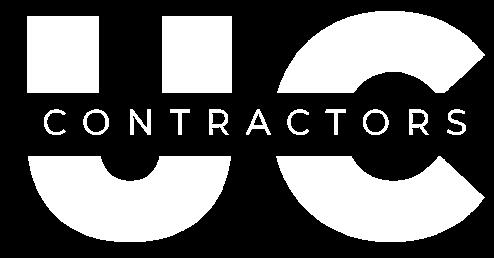


Certified Umbrella Payroll For the UK’s freelance & contracting community UCContractors.com krishnasolankidesigns.com Helping independent businesses, SMEs and agencies to elevate their online presence by creating distinctive brands and bold Squarespace websites. sQUARESPACE WEBSITes & BRANDING
What’s The Deal With Our Disappearing Focus?
Before your attention wanders and you reach for your phone, let’s talk about how the constant stimuli on phones negatively impact your productivity and creativity.
Is that quick social media scroll really worth
it?
Is your phone in a drawer, another room, or silenced and turned down so you can read this article? If so, you’re not alone.
Most of us can’t wholly focus on one single task anymore. No — we’re all continuously craving more and more stimuli. Whether it’s picking up our phones to check messages, refresh emails, or see a few hundred new 10-second videos, our attention spans are deeply fragmented now.
And not to sound like a boomer, but our phones are mostly to blame.
How do you work?
Do you need some quiet classical or lo-fi music playing in the background? Or do you need frequent breaks during which you pick up your phone to scroll through your [insert chosen social media platform] feed?
Few of us can focus entirely on the task at hand without needing
additional stimuli now. It’s a phenomenon so rare (or so it seems) that we’ve coined terms to help us get into a “flow state” or to do “deep work.” Some of the biggest email providers and operating systems on your phones and laptops have even begun offering “Focus Mode”, which allows you to snooze notifications (reducing the aforementioned stimuli, aka push notifications).
All this so you can get back your “stolen focus.”
The slow, continuous destruction of our attention spans affects two important things — our productivity and our creativity.
When chasing productivity becomes a distraction
It’s fairly obvious how our productivity suffers when we can’t focus. Sometimes it takes you way longer to finish a task, affecting your deliverables and deadlines. Other times, your fragmented attention causes you to miss typos, errors, or tiny mistakes that can negatively affect your project.
Research shows that it takes us almost 25 minutes to get back to the same level of focus we had before something interrupted us. This means every single time you pick up your phone to scroll or get distracted by an incoming message notification, your focus resets to zero.
As a society, we’re growing increasingly obsessed with productivity (haven’t you seen the numerous hacks, apps, trackers and


28 Freelancer Magazine
MENTAL HEALTH
whatnot that promise to improve your overall output?). But sometimes, this chase for “complete, consistent productivity” causes us to stumble. After all, despite everything you can do to “game” your productivity, there’s a global slowdown in productivity levels for a reason.
Chasing total productivity is a massive distraction and something that adds to the list of things stealing your focus. A simple paper checklist is one thing, but when you need to go through a complex system of apps and websites to check off a task on your to-do list, you risk distracting yourself online and simultaneously wasting time that you could use to rest properly in between tasks.
We lose momentum and morale whenever we recognise we’re not productive (or productive enough). And more often than not, when we stumble, we pick up our phones to scroll for a bit and feel better — increasing the number of stimuli we need to finish a task.
Amidst all this, we don’t even realise the mental and cognitive load we put on ourselves when we try to balance high productivity and distractions. Everything that demands your attention (yes, even a really quick 5-min scroll) impacts you.

This is why it’s so important to properly distinguish what’s work and what’s rest. The (almost involuntary) breaks you take to check social media aren’t rest breaks — your brain is still working and struggling to get back to the task. Burnout happens when the lines are blurred, and you don’t recognise that distractions aren’t rest.

So, what can we do to regain our focus?
On one of the massively popular social media sites, someone suggested using “The Chair” to help you be more productive. The idea is that if you don’t feel like working or, for some reason, keep getting distracted by other things and not focusing on your task, you sit on a chair kept in the centre of the room. You can’t bring your phone with you.
You can sit on the chair for as long as
bored, we can’t come up with genius ideas to eliminate that boredom.
Creativity flourishes when we’re wellrested, bored, and interested enough to do things, try something new or upend an current way of existence. When you’ve hit all three of these needs, it’s easy for you to enter your “flow state” aka, your “happy state” and focus on creative, useful, deep work.
Despite what the many, many books and articles tell you, another app or website to “track your time/activity/focus session” is not the solution. That might either be Sellotape on a wall crack or gasoline on a growing fire.
you want. But, mostly, you’ll sit there until you get bored.
And that’s where the magic lies — boredom.
We’ve lost the ability to get bored now. Every moment of every day, we have something we can focus on. Our phones bring the entire world into our palms — we no longer need to dwell on our thoughts and ideas.
In fact, in time, we might even stop having them.
This continuous onslaught of distractions also negatively affects our creativity. When we don’t have time to get
The only thing you really need to start working on eliminating distractions is awareness. When you’re more aware of the times you reach for your phone in the middle of a task, a conversation, or whatever you’re doing, that’s when you’ll be able to try stopping. Most of the time, we pick up our phones fairly involuntarily, unconsciously responding to our demands of growing stimuli.
Making it a conscious choice can help us re-focus on what’s important.
[The author of this article was tempted to pick up her phone at least 30 times as she wrote this article. This article was also written to continuous music — no one’s immune to the slow, ongoing destruction of our attention spans.]
Nia Carnelio is a freelance writer and book marketer, working with clients across B2B tech, SaaS, eCommerce, and publishing. Find Nia on LinkedIn at /Nia-Carnelio

29 Issue Nine // Spring 2023
MENTAL HEALTH
Miguel d’Oliveira is a composer writing music for film and TV. At the moment, he is mainly working on documentaries for the BBC and Channel 4.

Do Give Day Job
Up Your
Can you share details about some of your clients and projects?
I’ve written all the music for the TV hit series First Dates and all spin-offs, the last 15 Louis Theroux films and all of the new Michael Palin series. I’m finishing the music today for a very interesting 90-minute documentary about the war in Ukraine, where they built a wooden booth and took it around Ukraine and Western Europe. Ukrainian women of all ages, from 9 to 90, would go in alone and close the door. When they felt ready to talk about whatever they wanted, they pressed a button to start the camera. No interview whatsoever. The result is tremendous and powerful - and not easy to write for.
What did you do before you made the leap to freelancing?
I was a medical school graduate on a very slow path to specialising in maxillofacial surgery. I had a couple of short
30 Freelancer Magazine
stints, which proved very helpful (that was the intention) as a boom operator on a BBC film and as a sales assistant in what used to be Europe’s biggest music instrument dealerTurnkey on Charing Cross Road.
I had to be flexible and learn very fast. For example, in the boom op gig, I was told by the person who hired me, “on the first day of the shoot, observe the other boom op and keep your mouth shut.” Worked like a charm, and it was a super fun month. Plus I had great chats with Bill Nighy and Miranda Richardson. What’s not to like? I also wrote articles about music for film and studio gear for Showreel Magazine (sadly, no longer in publication).
How did you get into what you do now? How do you go from medical school to composer (via cartoonist and scuba diver, as your website ‘About page’ tells me)?
My initial dream (I almost wrongly said “plan” here) was to join an indie band. So, first I tried living in New York. That lasted a month until I joined a band who asked me for my green card as they were about to tour US and Canada.
Take two was to a more realistic London - a city I constantly fall in love with. I joined a band named Lapland, and two years later, it dawned on me that age was going to be an issue. So, I thought what kind of music adventure could I still embark on at 31?
Soundtrack was a random guess but so far, it’s been working like a Swiss clock. I taught myself to read music (thank God for the public library near Victoria train station), record, orchestrate, etc.... and posted an ad offering my clueless services on the board by the door of the London Film School in Covent Garden. A graduate took the bait. The first gigs were very hit and miss (emphasis on the ‘miss’), and
payments varied from £20 to a meal at Burger King. I now turn down about four well-paying gigs a month - sometimes more. And write music almost exclusively for projects I’d watch anyway.
How many qualifications do you have… from how many schools?
Medical School at the University of Coimbra (Portugal). Not as useless as people might think. Producers know that I can get them to disappear and make it look like an accident. A brief stint at Jazz School - I founded one at Coimbra University while a student. Sadly I had absolutely no time to practice. My jazz chops are still very, shall we say, avant-garde.
I also have an MA in
Composing for Film from National Film and TV School in Beaconsfield in 2006. There was no music teaching, but learning how to collaborate was an eye-opener. I felt like a fraud and that I didn’t belong there, and wanted to give up after the first two months. Glad I persevered.
What are your earliest memories of getting into music?
I’ve “played” in multiple bands since I was a teenager on the outskirts of Lisbon. Keyboards and later trumpet and sax with Lapland in London. No one in my family ever took an interest in my musical work. This never stopped me from tormenting them with CD compilations of my compositions though. Nothing is fun if it’s too easy.
>

Issue Nine // Spring 2023
“Imagine if a guitar and a typewriter had a baby.”
I’ve always been super curious about every single type of musical instrument and have been getting my hands on a pretty broad range, particularly over these past ten years. I probably have over 50 instruments in the studio - you can guess I’m super popular with my next-door neighbours. I normally have to play Tetris with the instrument boxes to reach my bass saxophone, the cellobanjo or my Taisho-koto (imagine if a guitar and a typewriter had a baby). I believe this turned out to be a very useful part of my “voice”. Instead of trying to imitate others, I let my inadequacies lead the way (up to a point). This, sadly, also makes it very difficult to have an assistant. So I have to sleep less for the time being.

Was there a moment when you realisedactually, this could be my job?
Yes. A call from my accountant telling me I had to make this work, or I was going to be in financial trouble.
My first TV gig was writing the music for a documentary with Rupert Everett called Victorian Sex Explorer. It went surprisingly far better than I expected. That won a few awards and I soon got the first calls from new directors asking if I would be available to write music for their documentary. Money was few and far between for a long time but you keep swimming. Get it into your head that you can’t turn back.


What do you prefer about what you do now versus what you used to do?
Helping others, one at a time, through any medical profession is very noble and a wonderful thing to do but I much prefer tormenting thousands at a time with my music. Gratitude is far more important than money to me. Obviously, not at the start of my “career” though. I get a good handful of emails from strangers for almost every single project I score for TV - which are almost on the same level as the odd bouquet of flowers, cake, and wine that some patients would bring me after treatment finished. But then, there’s the extra notch. For example, in at least five UK weddings. brides have walked down the aisle to my First Dates music (and they say romance is dead). In the more serious ones, two people emailed me praising my music for the Grenfell documentary, and said they’ll want that music played at their funeral. Oh, and when I scored the BBC documentary film The Last Miners, about the last coal mine in Britain, the director told the miners that ‘the guy doing the music was the same who did First Dates’ and they all got very excited because their wives loved First Dates.
Having said that, nothing beats being on stage. That’s what I miss about my band days. I’ve recently done nine gigs as a stand-up (open mic nights in London) and the adrenaline buzz is equal to none.
Is there anything worse about what you do now compared to your previous jobs?
Never knowing when the next gig and paycheck will come from. But that has now gone to a large extent. The opposite is an issue sometimes. You get a few gigs coming at the same time and have to say no to some, fearing whoever they get might (likely) do a better job, and that’s that director gone for future gigs. Also, there is no union or body to protect your rights.
Have you got a funny or weird freelancing/ client story you can share?
Submitting the wrong pitches (swapped over) to two clients. As in, sending completely inappropriate music for their very different projects and then discovering I landed both gigs!
On the episode of BBC TV drama Merlin I scored, I picked up a viola for the first time.
32 Freelancer Magazine
“Get it into your head that you can’t turn back.”
Needless to say, much as I tried, I couldn’t make it sound like a viola. The notes I got back were in praise of the fantastic authentic Celtic fiddle sound that was very adequate for the druid kid. Who was I to say otherwise?

But maybe my finest hour was while driving and taking a call from a producer on a handsfree phone. My wife was in the passenger seat and more aware of the situation. As I approached a busy roundabout, my attention had to go fully to the other vehicles. This was in the middle of the producer asking me if it was ok for them to keep 90% of the publishing rights on the music I was going to write for their series. It took ages to negotiate the sneaking through traffic so I was silent for a good while. He perceived this as me being insulted by that percentage, so proceeded to go down: “80%?”...silence... “75-25?”...silence. By the time my brain switched back to the call, post roundabout, we were on 50-50, which was beyond great for me. The lesson I took from
this was: the less I talk, the better my life progresses.
How do you design your days?
I don’t. Being part Iberian, part North African I like to play it by ear (no pun intended). I’m a firm believer that, as long as there is enough coffee, everything will eventually slot into place.


Procrastination dictates the various creative ways I find to waste time. Until I do 90% of the work one hour before the deadline while swearing at the computer.
How important is it to keep your mental health in shape?
You have to deal with very demanding people who easily forget their deadline has slipped a few weeks
down the line and is now clashing with other jobs you have. Everyone likes to think your time is exclusive to them. At the moment, I’m on - by no fault of my own - two TV series and two feature documentaries. Some days I get asked to provide new music, comments and time for meetings for all four.
Staying creative and polite can be a challenge, so I clean up my headspace mostly with sailing - on the Thames and in the Docklands. It’s cheap and your immune system gets a boost every time you fall in the water. I also have several hobbies that take me as far from music as possible, like building little autonomous robots, which I code on Arduino [opensource electronics platform] and other similar crazy stuff that drives my family nuts.
Coping strategies can be quite handy. It’s a lonely job where
33 Issue Nine // Spring 2023
>
“Gratitude is far more important than money to me.”
you are constantly competing with people who are sometimes a lot more skilled at networking, social media, and knowing the right people. You also need to be able to take criticism from people who can be pretty brutal. And you should be polite to those who are not - I must admit I’m still trying to find the instruction manual on that last one. Look after your self-esteem.
How have you found clients?
I don’t. The few times I tried, I wasn’t successful. And as soon as I stopped trying, the calls started coming in. I am aware that luck has probably played the role of an agent (never had one) in my career. It’s mostly word of mouth. Having my name, a lot of times, as the first thing that comes up on TV at the end of a show doesn’t hurt either.
At the very start, I contacted dozens of directors doing their first short films - to write the music for no fee. Some of those turned out to be editors (as day jobs) and some got me a gig or two. It eventually snowballed.

What advice would you give anybody thinking about making the jump to freelancing?
Don’t think about the pros and cons. Just do it. There’s nothing worse than thinking at retirement: “I could have...” I took the plunge, even without any promising signs of talent. That comes later through work and luck. If it doesn’t work out, then be proud you tried.
Top: Boom op with Bill Nighy

Middle: With Michael Palin
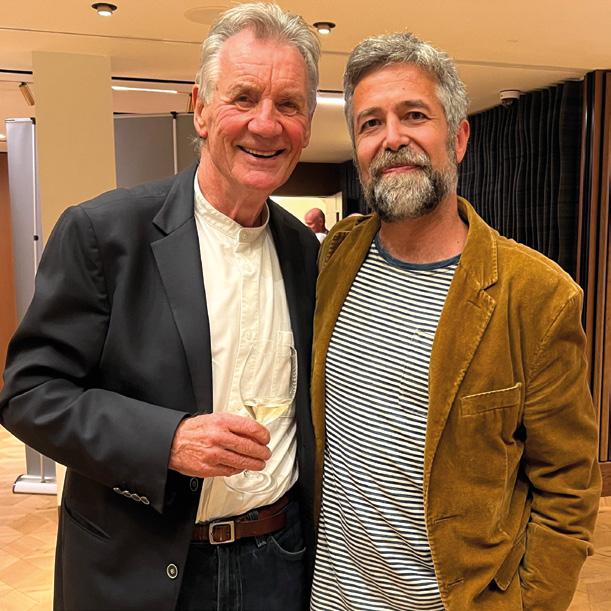
Bottom: With Louis Theroux

There’s advice which maybe is more specific to TV. For example, don’t accept really bad deals when you know they can pay decently (easier to say/do when you are not desperate). Know your worth. If you don’t help hold the line, it’s a race to the bottom. Try and find what can make you stand out from the crowd and the increasing background noise. Keep learning and trying to push the envelope on every job you do. Explore your
limitations. Treat everyone with respect - they are trusting you with something that has their name on it and sometimes their savings. And (this one is very niche) above all, try to have fun. I always say that - the day I feel like a have a job, I’m doing it wrong. ●
Find

34 Freelancer Magazine
Miguel d’Oliveira on Twitter @MiguelDOliveira, YouTube /MioPiano and visit migueldoliveira.com
“Keep learning and trying to push the envelope.”

From Bin Man to Rocket Man
John McKie is a copywriter specialising in creating launch packages for coaches, community builders and course creators. He lives on the Isle of Wight with his family. Mel Barfield caught up with him to grill him on his journey from collecting household waste to launching at lightspeed.

So, John. As this is the family feature, tell me about your family.
Me and my wife Jo met at school, and we’ve been married for 14 years. We’ve got five kids; four daughters: Tallulah (13), Norah (10), Beau (8), Murphie (6), and one son, Indiana (2) [I applaud John’s ability to get his children’s ages right, and confess I once got my daughter’s birthday wrong. And I only have two to remember]. Jo’s just finishing her training to be a nurse, so it’s been full on.
Have you always been an Islander? No, I grew up in Uppingham in Rutland, just outside of Leicester. When I was 17, my parents moved here. They invited me too, but I’d just got together with Jo, so obviously I wanted to stay! I moved in with her for a bit until she finished her A Levels, then we came here around 2007 and both took up temporary jobs at Argos.
36 FAMILY
You’re a writer now, but you had a more outdoorsy job for a while, didn’t you? Yeah, I became a bin man just before we had kids. I’d worked my way up to manager at the Argos by then but hated it. I worked every day of the week until God knows when. Retail is frantic, especially around Christmas. When we found out we were having a baby I knew I needed a change. My dad was a driver on the bin lorries. One day he rang me and said, “someone’s not turned up to start, get down here now!”. I genuinely loved it, working outside. I’d start at seven and finish at lunchtime, so we could go to the beach for the rest of the day.
How did you end up working for the NHS?
After I worked the bins for six or seven years, I felt like I was wasting my brain a bit. The company got taken over and the shifts got longer. I’d walk a marathon every other day, so it was a lot physically. I got an admin role at the hospital and worked my way up to be Quality Manager for Ambulance and Community.
And then you become a writer?
Early on, I did some work in the complaints department; that’s when I noticed I like writing. I reached the point I couldn’t progress in the NHS without getting a degree, so I Googled jobs that involve writing. Copywriting came up and I signed up for Alex Cattoni’s The Copy Posse Launchpad. I completed all the work in the evenings and built up a demo portfolio, then started to reach out to people I knew.
A friend introduced me to a PGA golfer who needed a sponsor deck. Since then most of my work has come through referrals and the communities I’m part of. Almost two years to the day that I started Alex’s programme I gave my notice at the hospital. The original plan was to drop down to three days a week there and use the other two days for copywriting to build my business gradually. But I couldn’t have part-time hours so in the end I just went for it. My general mentality is to go all in, and it’ll work itself out.
How was it, leaving the safety of the NHS with its regular hours and pension?
It was exciting but in the few weeks just before I was due to leave my dad passed away suddenly. Obviously, I was entitled to bereavement leave, but I’d been there for seven years. I wanted to say goodbye to people and hand it over, so I went in for my last few days. I
didn’t have much time to grieve properly, which was a bit crap, but it’s just how it was. And I thought, if I’m going to commit to freelancing, I’m going to have to deal with this sort of situation. It was just a big shock to start with.
What does your average day look like now?
The girls are at school, and Indy is at home with me. Sometimes it feels like I traded the NHS for daycare! But that’s the beauty of freelancing because you can work whenever. I often do my copywriting work in the evenings once the kids are in bed. Sometimes I’ll still do the odd shift at the hospital to help my old team. When you’ve got a family, it can be scary knowing you need to bring in enough money. It’s nice having those connections to the NHS.
How do you find a work-life balance?
It’s tough. The one thing I’ve found most difficult is managing my stress levels and the
37 Issue Nine // Spring 2023 FAMILY
>
“My general mentality is to go all in, and it’ll work itself out.”
balance of it. All it takes is someone being sick, then I might need to do a 12-hour writing marathon. That’s the beauty and the beast of freelancing. There’s no structure; Indy might nap or might not. In the evenings, I work on my website, the same way someone else might play a video game to switch off. The benefits still outweigh the bad bits though.
Do you enjoy freelancing?
Yes. It’s bloody hard. But yes.
Who’s been a stand-out client?
Archangel Academy - a community for entrepreneurs. It was eye-opening to how some people see the world and how we can reframe our mindset. When you hear these stories of people earning a huge amount of money every day, every month. My role was to take all the Academy content and turn it into emails and course guides. I also wrote sales pages and helped run a copy shop where members could come and get pointers on their own copy. It was a great experience, and I got to fly out to Canada for some of their networking events. I met some brilliant people.
Tell me about your signature offer, the Lightspeed Launch.
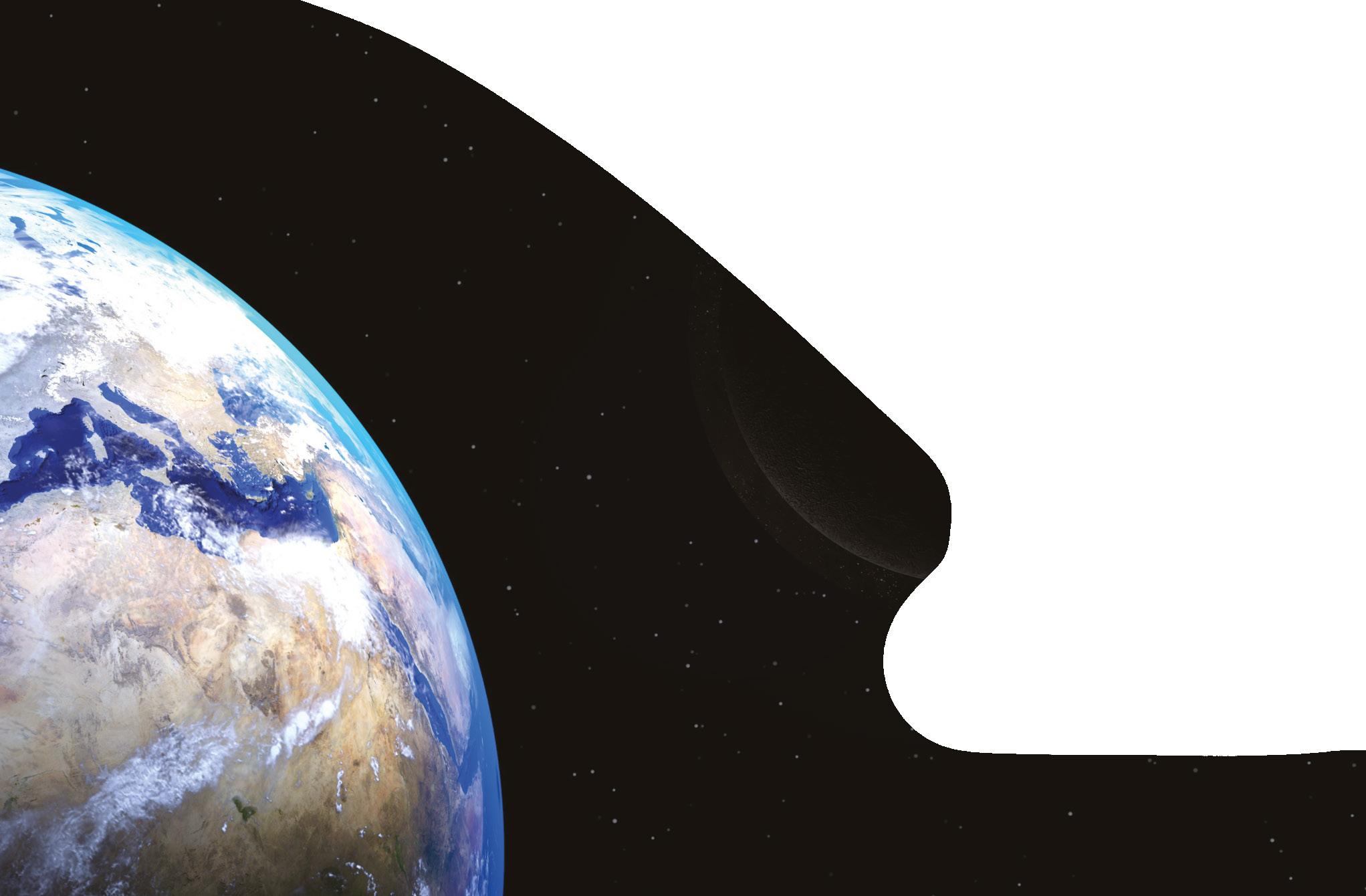
It’s an entire launch package for entrepreneurs. I kept seeing people offer just a sales page or just some emails and I know how much more needs to go into a launch. I’ve already seen all the cogs turning on different launches I’ve been involved in. When I get a new client, we get on a call at the beginning to work out the strategy. I’ll find out all the juicy bits about them. Then when I’ve written their launch copy, they get each asset in a folder with an overall plan. All they’ve got to do is schedule it. The idea is they can go from standstill to sprintlaunch in 30 days.


How do you market yourself?
I’ve done a few cold outreach emails, and they’ve gone nowhere. Almost all my work is through referrals and through being a member of different online communities.
What’s in your future? Would you ever go back to working in an office fulltime?
Probably not. But I could see why people would. I miss the camaraderie of it; freelancing is very isolated. If I ever start a little launch agency, I’ll definitely have an office for my team! But for now, I want to build my business and be known as the launch guy, so when people need to launch at speed they think of me. ●
Find
Mel Barfield is a freelance copywriter specialising in creative ad copy. @allcopymel

38 Freelancer Magazine FAMILY
John on LinkedIn /john-mckie and visit johnmckie.com
“The benefits still outweigh the bad bits.”
BLACKNOVA DESIGNS

Bespoke,responsivewebsitedesign& development.Createdbyourin-house WordPressdesigners.Weensure everywebsitetrulyrepresentsyou.
Fast,secureandreliable.Boostyour websiteloadspeedandimprove securitywithourUKbased,SSDpoweredwebsitehosting.

Getonlineinaflash.Securing multipledomainscouldn'tbeeasier withourbulkdomainsearchtool.
Makingyouvisiblewithon-page, organicreach.Increasewebsitetraffic andimproveyoursearchengine rankings.





WebDesign DomainRegistration WebHosting SearchEngineOptimisation sales@blacknovadesigns.co.uk blacknovadesigns blacknovadesign blacknovadesigns blacknovadesigns CALL 01793210045 www.blacknovadesigns.co.uk
ProfessionalITSolutions
Money
Financial Minimalism Peter Komolafe
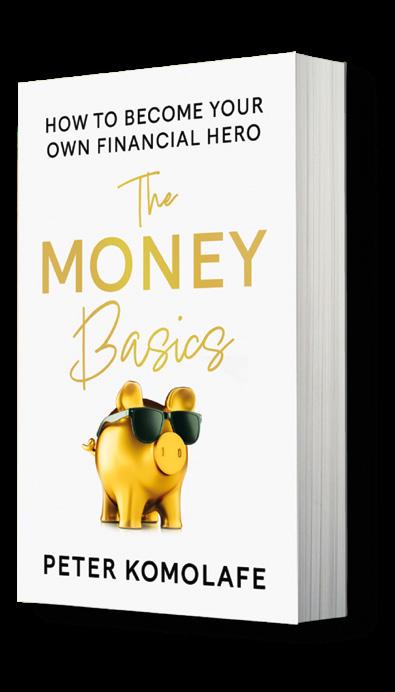
Our Money Expert Peter Komolafe shares what he’s learnt about leaping into self-employment, the importance of audacious goals and following your dreams.

I’ve always believed that if you work towards a really big goal, even if you don’t hit that goal, you’ll still do something pretty awesome.
Today I’m sharing the story behind one of my goals in case you’re on the edge of doing something different, leaving your 9-5 job, or pursuing a personal passion. But I’m not going to pretend it’s easy because it’s not. And my wins are part of a long path full of difficulties and disappointment.
My BHAG (big, hairy, audacious goal)
It all started years ago when I worked as an audience researcher on a TV show called CD:UK (does that take you back?!). If you’re not quite as old as me, it was an old-school music TV programme hosted by Cat Deeley and Ant & Dec. I remember going to the show every Saturday, watching how live TV was made, admiring Cat, Ant and Dec and thinking “Wow! It must be amazing to be in front of the camera”. Fast forward 20 years, and there I was, on camera, filming for ‘Lorraine’ in the exact same building, talking about money and finances.
You see, when I set up my podcast and YouTube channel in 2020, being on TV was my audacious goal; one of those goals that’s so big you never really think
it’s going to happen. But setting big, hairy, audacious goals was the mentality drilled into me when I worked in Canary Wharf because if you work towards something big, you’re going to achieve something great. But what does a big, hairy goal have to do with managing money? Well, if you are going to put your best foot forward, you’ll need to have your business hat on and be pragmatic about how you can make things work financially. So you can use money as a tool to build the life you want.
Overcoming financial risk
The biggest thing that hinders people (and the reason I didn’t make the leap sooner) is financial risk. It’s such a big thing to overcome because most of us don’t have
40 Freelancer Magazine
“Set big, hairy, audacious goals.”
Another BHAG of mine. My first book is out.
the financial resources we need to start something completely new or to change careers. So it’s really important to plan and be pragmatic.
1. Build your runway
Consider how long it will take to build your dream to the point where it will start to make a bit of money - this is your runway. It took me a year to build my podcast and YouTube channel. (I made no money from it for an entire year!) So if it’s going to take a year, you need enough financial resources to cover your costs for that time. Which means using your current income to build that pot.
● Work out how long your runway needs to be
● Work out your emergency fund (your essential monthly expenditure X the number of months you need to cover)
● Calculate how you can start to put that money aside each month
● Stay disciplined
It’s not an easy road to walk. You’ve got to be really disciplined and keep your eye on the ball. But if it’s worthwhile and it’s something you really, really want, you’ll do what’s necessary to build the runway you need to venture into what you want to do.
2. Don’t jump blindly
Doing things on your own is hard; it’s all-consuming. Social media doesn’t show
the pain, the turmoil, the hard work, and the stress. So it’s important to understand that it is going to be difficult. You have to ask yourself, are you ready to walk this difficult path?
3. Put good things out into the world and help people
It doesn’t matter what your field is. If you really want to do this wonderful thing that fulfils you and gives you purpose, it will happen if: you believe in yourself, you’re happy to be strategic and you’re prepared to knuckle down and work hard. I genuinely believe that amazing things

happen when you put positive energy and good things out into the world and you’re trying to help people. ●
Find Peter’s BS-free investment advice on YouTube / ConversationOfMoney and on Instagram @ConversationOfMoney.
You can also listen to The Conversation of Money Podcast and watch him on Steph’s Packed Lunch (Channel 4).
41 Issue Nine // Spring 2023
Money
“I genuinely believe that amazing things happen when you put positive energy and good things out into the world and you’re trying to help people.”
The general consensus is that putting on events (especially on a large scale) is notoriously difficult and that it’s very hard to make money. Then Andrew and Pete come along and tell us to ‘hold our beer’.

Who are you, and what is your event?
We’re Andrew and Pete and we run ATOMICON - one of Europe’s largest business growth conferences for freelancers, entrepreneurs and marketers. This year, it’s happening on Tuesday 13th June, in the beautiful city of Newcastle-upon-Tyne, UK, and you can also attend virtually.

How did you become business partners?
We met at uni and ran the Entrepreneur
Society, our first foray into events and how to get people to them (which at uni was with chocolate and booze).
How long has ATOMICON been going, and how many have you had?
ATOMICON is an annual conference held since 2019.
How has it evolved?
We only expected 80 ticket sales in the first year, and we’d done a checklist and
budgeted it all out based on the worstcase scenario (giving 80 people a great time), and the best-case scenario (we can also make money). Then 350 people bought their tickets in the first five days! It was a ‘pinch me’ moment, so we booked the biggest venue in Newcastle. We’re expecting between 1,000 and 1,600 attendees this year. We’ve always got a really good grasp on profit and loss for every big decision we make.
42 Freelancer Magazine
What does your event do really well?

We spend a lot of time and money on hiring the best speakers possible. These aren’t just highly successful business owners, but they are amazing speakers who can deliver with great energy and are very confident on stage. This immediately puts the audience at ease. We also always do some things that aren’t expected to give people a feeling afterwards that it was a really great event, whether they attended it in person or online.


How did you decide on the different elements that make up the event?
Everything we do is about making the
experience better for the attendees so they leave inspired and with an action plan and new connections to reach new heights. This is why we have the bonus matchmaking service and the implementation workshop as part of the ticket. We also do a big survey after each event and make improvements.


How many people are involved in getting the event up and running?
We have an incredible team of 14 helping us, and it takes a full year to plan it.
How do you market the event?
We love bringing together other online communities so we do a lot of collaborations with community hosts. It’s a great feeling seeing other communities meet in person for the first time in real life from talking online for years. It will be great to see the Freelancer Magazine community come together at ATOMICON. We also utilise attendees to
“We love bringing together other online communities.”
help us spread the word, and people are keen to say they’re going to ATOMICONit says something about them.
How do you deal with pre-event nerves? We’ll let you know when we figure that out.
What’s the biggest mistake people make when they want to organise events?
They do it because they want to create it and not because an audience wants it, which creates an uphill slog. Build an audience and community first then people aren’t just there for you or the event -
they’re there for the other people in the community.
What’s the goal for ATOMICON?
To be Europe’s largest business conference and totally hybrid. We’re pro-in person but virtual events can also be frigging awesome and change businesses, especially now with Web3 and the Metaverse.

What’s the secret to epic virtual events? We ask ourselves what we have other than just the content - it’s networking, the community and time to think about your business - how do we also incorporate all that? How can you mimic what people want from an inperson event? And what can you do that
you can’t do in person that makes it even better, so it doesn’t feel like a crap version of the in-person event? We have speed networking, parties, coworking rooms, matchmaker email introductions and speakers popping up randomly online asking if people want to join them in a private room for a chat (just like you might bump into them at the bar).
What tips would you give to someone considering launching their own event?
When promoting your event, go big, create a buzz and sound excited. If you’re not, you can’t expect other people to be. And never use an apologetic tone of voice in your marketing.
Go to events that inspire you. We attend events that are outside our comfort zone and local area like Social Media Marketing World in the US. It will help you to know what to pay attention to and how to solve problems like lunch queues.


We use pricing tiers, so the price goes up the closer you get to the event. And sell tickets to your next event while you have a captive audience at your current event, telling people that you will make it even better next year (and, of course, do!). It massively helps event organisers to get some ticket revenue upfront.
And hire an events team - the logistics are crazy!
Where can people find out about ATOMICON?
Check it out here: atomic.site/freelancer And follow the hashtag #ATOMICON23
Freelancer Magazine

Painless accounting for freelancers & small businesses goldstagaccounts.co.uk/freelancermag
Four freelancers lift the lid on their unique creative processes and give their best advice for staying inspired.
46 Freelancer Magazine
smilelike
”
a sugared-up toddler.
“Make time every single week to do something that makes you
Dave Officer
Hi Dave! Where are you based and what do you do?
Hello, I’m Dave Officer, a graphic designer and illustrator based in Hemel Hempstead, Hertfordshire. Try saying that with halitosis.
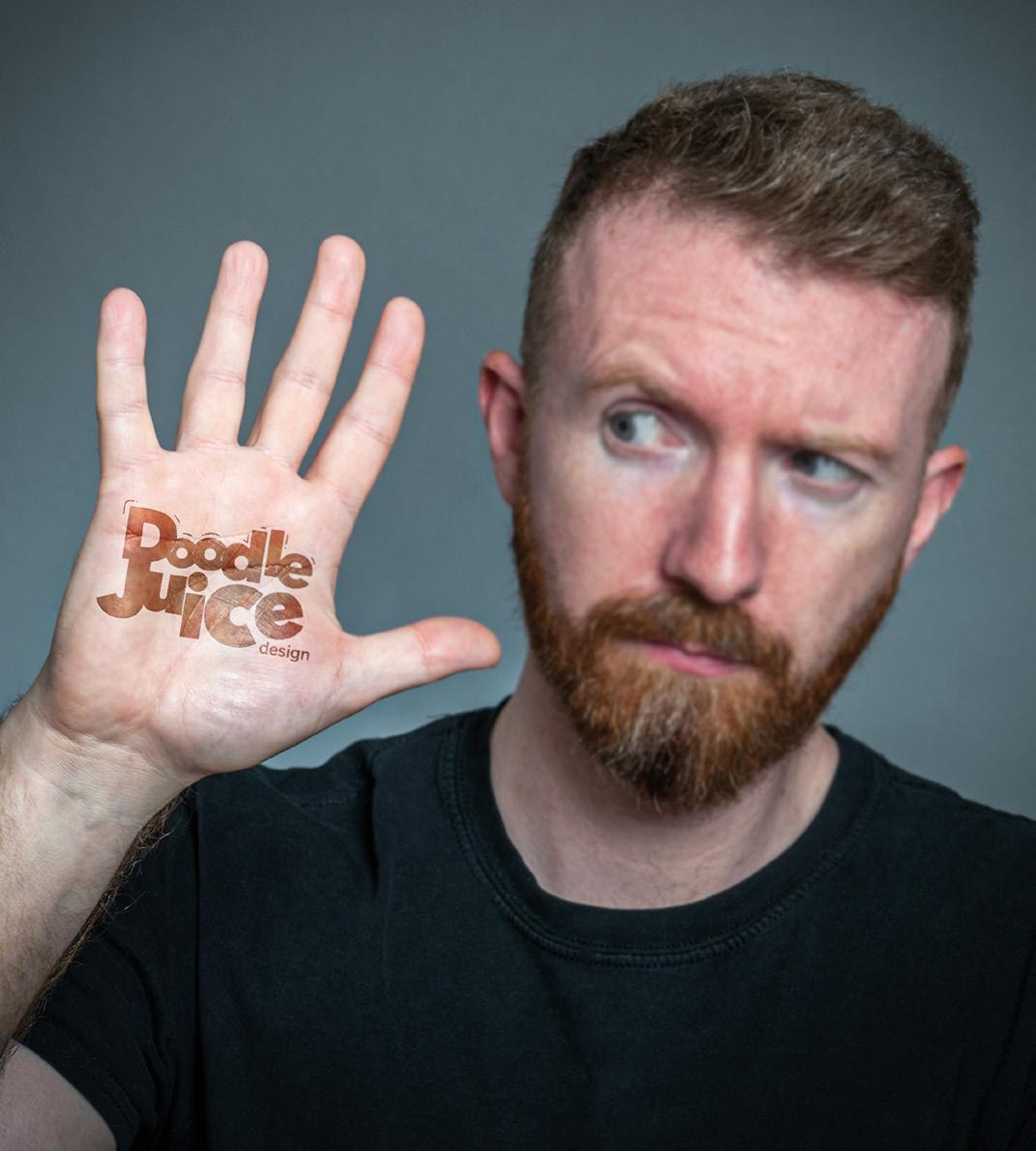
Where do you find inspiration for your work?
I tend to get most of my inspiration from a combination of things. Artists, other designers, comedians, film and music. A cracking standup routine or a really moving song can often send my brain in interesting directions, as well as conjuring up visuals in my head. This is often much more effective than looking at work produced by people in my own field.
What is your creative process as a freelancer and how has it developed over the years?
My process has changed massively over the years and it’s definitely not something I would get away with if I was employed!
Creating content and publishing it online has transformed how I work. It helps me market myself and gives me the freedom to experiment with ridiculous ideas as well as removing any concern I place on the outcome. I now make sure I allocate two full days a week solely dedicated to creating content. I spend a lot more time on this process than most freelancers I talk to, but for me, the benefits are sooooooo worth it.
them are utter tripe but I normally get at least one a day that I’m pretty happy with. I’ve also been able to reference these idea lists at later dates to get inspiration for client projects.
At the end of every month, I go back through the 10 ideas I’ve had each day and pick out everything I can use for content and project ideas for the upcoming month.
How do you overcome creative blocks?
I preempt their arrival by doing everything I’ve mentioned above. Creative block can last for weeks when it hits me but because I try to be as prolific as possible whilst the creative iron is hot. I have lists and lists of ideas I can fall back on when my brain decides to take an extended (and unauthorised) vacation.
is or how little time you can squeeze in for it at the beginning, just do it.
If you don’t like how it looks when you’ve finished – who cares. If you feel nervous about your self-imposed “lack of talent” – do it, then keep it to yourself. If you don’t want to show it to anyone when it’s done – then don’t. None of these things matter; just enjoy the process, get it done… and move on.
What’s the next creative thing you’re looking forward to getting stuck into?
I also do an exercise I learned from an entrepreneur/author named James Altucher. The idea is simple, write down 10 ideas every single day. I do this before I start work each morning. I give myself a time limit so my mind doesn’t have space to wander, then write down 10 ideas as quickly as I can. Most of
What’s your best advice for a creative life?
Make time every single week to do something that makes you smile like a sugared-up toddler. Doesn’t matter what it
I’ve got a membership group I’m starting later this year to help people develop their own creative thinking. I love helping people with this sort of thing so I can’t wait to get this going.
Website: doodlejuice.co.uk
Everything else: koji.to/doodlejuice >
47 Issue Nine // Spring 2023
“If you don’t like how it looks when you’ve finished – who cares.”
Ginny Koppenhol
Hello Ginny! Where are you based and what do you do?
I’m a portrait photographer and a house DJ from Lancashire, but one of the biggest creative processes of my life is building my business. It’s an ever-evolving project!

Where do you find inspiration for your work?
Like most people, I feel inspired when I’m reminded of the incredible potential of our world or that of human beings. Some examples: a Morecambe Bay sunset, hearing a story of someone overcoming a great challenge, wise things my kids say, a starling
murmuration, architectural wonders such as the Pyramids, 500 people in a sweaty basement rave appreciating the same perfectly crafted bassline. However, making time to be still, perhaps through meditation or walking outdoors, allows me to access the ideas that may have been percolating as a result of these experiences.
What is your creative process as a freelancer and how has it developed over the years?
The creative process often feels like a fine balance between accessing some mystical realm where all the good ideas live and regimented discipline. In her book Big Magic, Elizabeth Gilbert suggests we sit down each day and ‘do the work’, regardless of whether we’re in touch with our muse at that moment. But this can feel like wading through treacle. Energy flow is all important when reflecting or generating new ideas. Having a business, young children and a gazillion other things to juggle, for me energy can be in short supply. So when I’m feeling the creative flow, if my schedule allows, I’ll create space to explore the ideas that are coming and do the less creative tasks another time. This is one of the many advantages of freelance life.
How do you overcome creative blocks?
When I need to generate ideas quickly, I take a methodical approach. I keep digital folders of ideas for portrait
shoots, photography workshop activities and social media posts, to dip into when needed. In these moments, I thank ‘past me’ for providing the goods. Photo books, magazines, digital exhibitions, and Pinterest are always there to lend a quick hand too.
Talking to others, especially other creatives, often gets me out of those creative ruts. Having someone else’s input can be gold, and even lead to some superb collaborations. Switching activities helps too. If I’m stuck with my photography, I’ll get on the decks, or if I get frustrated planning a DJ set, I might take some photos. If I give my brain a rest from a perceived problem, often the solutions arise naturally.
What’s your best advice for a creative life? Energy is all important. When I am overwhelmed or burnt out, the creative energy stops flowing. So my advice? Get some great quality sleep, eat nourishing food and drink lots of water. Do I always do this? Nope, but I know it helps when I do. I stopped drinking alcohol in December too and am already noticing that my energy levels are more consistent. This can only be good for my work.
What’s the next creative thing you’re looking forward to getting stuck into?
I am in the early stages of planning a photography portrait series, featuring ravers and DJs who are sober, yet still love to go to clubs and festivals. In all honesty, I want their tips! In fact, that’s another bit of advice; always have a personal project on the go, something that isn’t linked to your paid work. It helps to keep the passion for your creative interests alive.
Website: gkoppenholphotography.com
Instagram: @ginnykopp
LinkedIn: @ginnykoppenhol
48 Freelancer Magazine
Ashwin Chacko
Hi Ashwin! Where are you based and what do you do?
Hi, I’m Ashwin Chacko. I’m an Indian author, illustrator and motivational speaker based in Dublin. I specialise in positively playful storytelling to bring joy and encouragement. My mission is to champion creativity and empower people to find their inner spark.

Where do you find inspiration for your work?
I believe inspiration is all around us, I think it’s a question of honing our eyes to see it. For me, in particular, it is from nature, books, vintage trinkets, cartoons, type-driven packaging, tattoos and skateboarding.
People that are pursuing excellence in their niche are inspiring, like Jon Contino (hand lettering), Erwin McManus (communication), Chris Do (business of design), James Victore (motivation), Keith Haring (pop art), and Steve Harrington (illustration/design).
What is your creative process?
Everything starts with a conversation to understand the object or aim of the task. The more time I spend with the client, clarifying the intention behind the brief, the better I can develop a solution.
Next I go into the ideation stage; where I research the topic and look for visual inspiration. With all this gathered data, I then go about developing thumbnails to clarify the layout. These are tiny rough sketches to see if the idea is worth pursuing. Once I’m happy with one, I will develop this into a black and white rough sketch to present to the client.
As my illustrative style is shapes-based, the rough sketch acts as a guide for me to create the final image. It involves developing a colour palette and then layering the various coloured shapes on top of each other to produce the final image.
Then I present the final image to the client. At this stage, small alterations to the colour might be made. But more often than not, the client gives the thumbs up.
How do you overcome creative blocks?
I recently read Sorry Spock, Emotions Drive Business by Adam Morgan and it put into words what I was subconsciously already doing.
The first step involves the process of looking for inspiration and researching. This is where I will watch inspiring talks, read articles or books, or gather visual reference material to inspire the process.
Next I start to map out ideas based on this data. Sometimes I get lucky and have a catalyst that allows me to jump into action.
Then I need to step away from the project and go and do something unrelated. This can be going for a walk, doodling, making something with my hands, listening to a podcast, or just having a sleep. For someone looking from the outside this can seem like a waste of time, but it’s a really important step. As Adam says in the book, this gives your subconscious brain a chance to process all the data and create more connections.
Once the spark has been ignited, it needs to be put into action, whether that is design, illustration, or simply writing it out.
What’s your best advice for a creative life? Your value is in who you are, not what you do. As creatives we tend to pour our heart and soul into our work, and so our identities become intertwined with our work. This is a dangerous place to be because then any criticism of your work feels like a criticism of you. Only when you separate your identity from your work can you grow.
What’s the next creative thing you’re looking forward to?
I am currently working on a book Just Start to encourage creatives to push past their doubts and fears and just start. I’m also working on building a YouTube channel to encourage people to pursue their passion and turn it into a business.
Website: whackochacko.com
Instagram: @whackochacko
Youtube: youtube.com/c/ashwinchacko
49 Issue Nine // Spring 2023
>
Pete Gray
Hello Pete! Where are you based and what do you do?
Hello! My name is Pete and I am an illustrator from Nottingham specialising in visual storytelling through weird and wonderful cartoons for anything from junior fiction to packaging, poetry and publications.
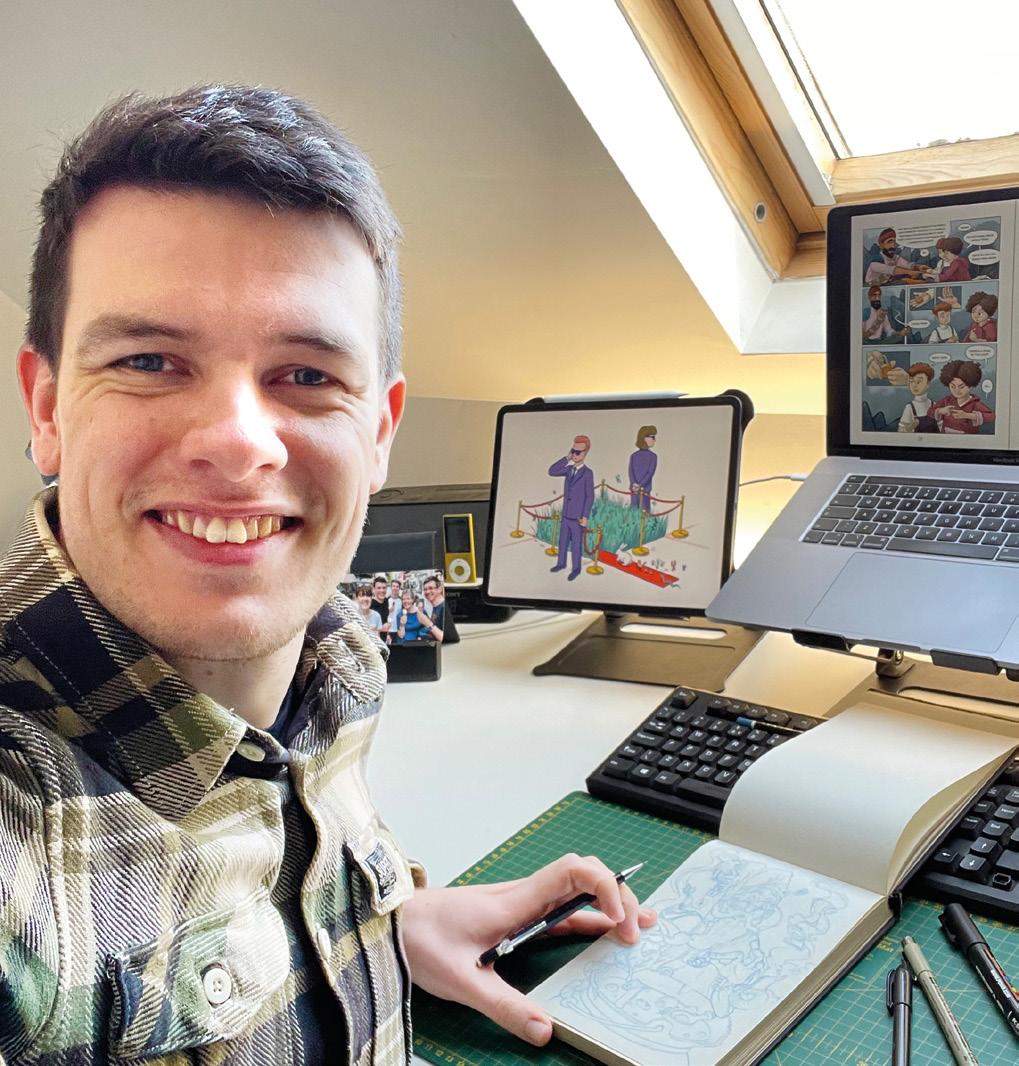
Where do you find inspiration for your work?
I’m a big extrovert and find huge amounts of energy and inspiration in time spent with others. Friends, food and conversation are the killer combination for observing, listening and enriching your mind with stories, experiences and ideas that send my visual brain spinning off in all kinds of different directions. I
am constantly playing with turns of phrase, metaphors and puns to twist everyday things and seemingly mundane situations into illustrations that challenge and charm.
What is your creative process as an illustrator and how has it developed over the years? My background in design forms the foundation of my process and I build a piece to serve a purpose and communicate an idea. The idea is always where I start and then I play in a toy box of seemingly endless visual storytelling techniques to make that concept work as hard as possible.

I have to build space to play, asking whether each feature helps or hinders the point I’m trying to make. I used to leave bits in that I liked or had worked hard on, even if they weren’t particularly helpful, but have learnt to hold back as nothing is wasted. Tuck it in your
sketchbook and it will almost always get used somewhere else or lead to an even better idea.
How do you overcome creative blocks? Coming back to the idea I am trying to communicate is key. I find my ideas seem to queue up in my brain and I will often write notes and do sketches of ideas that I know I won’t use, but need to get out of the way so that I can get to the new more exciting ones.
What’s your best advice for a creative life? Get out of your studio, go to new places, meet new people, work in different cafes, even take a different route to the same cafe and be intentionally interested in the everyday. You’ve gotta mix it up and protect the time you have, or the time you need to make, in order to be creative.
What’s the next creative thing you’re looking forward to getting stuck into? I’ve recently invested in my learning and bought the Framed Ink book series by Marcos Mateu-Mestre and I cannot put them down! Four books on advanced visual storytelling techniques that get me unbelievably excited to put into action. For graphic novel artists they are an absolute must and this may or may not be a hint to some pipeline project work…
Website: bigappetiteillustration.com
Instagram: @bigappetite.illustration
50 Freelancer Magazine
“Coming back to the idea I am trying to communicate is key.”
Setting fire to money never felt so good.
This is the bit where we tell you what we do. We make candles, the difference is that we don't trouser all the profit. We give 10% of all sales to charities including The Trussell Trust. Based in Broadstairs, Kent we just want to make good things.

This beauty was designed by Melanie Johnsson (its important to us that we credit freelancers) and the photograph was by Lyndon at York Street Studios.


GOOD-CANDLES.com
Do I Need A...
A bold brand doesn’t necessarily mean a big budget. But it can make a huge difference to how confident you feel about your business and how much you can charge. With the help of personal branding expert Hadrien Chatelet, we’ve put together a stack of tips to help you create a confidence-boosting personal brand.

What is a personal brand?
Personal branding is simply another word for identity; it’s how you define who you are, what you stand for and how you want others to see you.
Why do I need one?
When we buy, we decide based on price, quality, convenience and culture. The reality is, there’ll always be someone cheaper, as good as you (if not better) or faster. But your culture - your personal brand - is completely unique. No one else has your story, your values and your unique point of view. So having a personal brand can help you stand out and attract the right clients.
52
A personal brand is the ability to clearly communicate what you’re about and what makes you unique.
Hadrien Chatelet
Hadrien Chatelet
audience.
Hadrien Chatelet
Does this mean I need a logo?
This may surprise you, but you don’t actually need a logo to have a personal brand. When you go to a supermarket, you probably make decisions based on the font and colours you see on the packaging. So think of your personal brand as your packaging; a distinctive colour palette and a sharp typeface will give you plenty of standout and personality. If you do decide to have a logo, it’s worth getting one designed properly by a graphic design expert.
How do I create a personal brand?
Hadrien reminds us to keep it simple with a combination of 4 crucial components:
1. Your unique story
Your personal brand starts with your personal story. Take time to understand what events in your life led you be the person you are now. Define your story around what you stand for and why you set up your business.
2. A distinctive colour palette
Choose colours that showcase your personality and values. Do you want to ooze warmth or positivity? Is your brand playful or serious? The key is to trust your gut and not overthink it. Most of us set
up our business to answer a challenge we’ve had in the past, so in a way, you are your audience. If the colours work for you, they’ll likely appeal to your clients too.
3. A fearless font
Pick a font that empowers you. Your brand is out there every day fighting for business with you, so choose a font that you love and that makes you feel good. Fonts are relatively inexpensive and an amazing typeface will always be better than a slapdash logo.
Personal brand checklist
Nail your story and values
Pick a strong font that empowers you Choose a colour that gives you goosebumps
Invest in photography (and vary your outfits and accessories)
Tips for brand consistency
Get clear on your three core values. Alongside your story, sharing your values builds a clearer picture of who you are and what you’re about
Tell your story consistently; on social media, at networking events, and on sales calls
Whatever channels you choose, put your personal brand out there consistently; always use the same font and colour(s)
Change the background colour on your profile pic to reinforce the connection with your brand colours
Hadrien Chatelet
4. Your lovely face
People buy people, so don’t hide yourself away. If you’re selling a service; you are the product and prospective clients want to see your face. Invest in some decent headshots and don’t be afraid to show yourself consistently across all your channels and marketing.
Add your photo and brand colours to your email signature and newsletter
Be consistent in the way you look and present when you speak to or meet with clients
The impact of personal branding is instant and sets the tone for what clients can expect from working with you. If your brand is sharp, slick and consistent, clients will expect your service to be too. Which ultimately means they’ll pay more for your services.
Your personal brand should give you wings!
53 Issue Nine // Spring 2023
Branding is the action of creating a connection between you and your
A good personal brand is like a new outfit: it should empower you and give you confidence.
>
The Power of a Rebrand
Some of our favourite freelancers share their recent rebrand stories.

Sally Fox, Lumen & Fox
Sally helps big-hearted businesses with copy, tone of voice and brand language with bite.
The rebrand
I wanted to level up the way I presented my business to the world. I had some pro photos, and noticed how the distinctive colours made my brand more memorable. My new brand feels like the perfect expression of who I am as a business owner and who my customers need me to be.
Top brand tip
While your personal brand needs a big dose of you and what you stand for, it should be designed to speak to your ideal customer.
Quick fire questions:
What one thing are you BEST known for? Banging on about the ways ‘sustainable’ brands express themselves. Most memorable thing about your branding? The beautiful colours. Fave brand-building platform? LinkedIn with a side order of Instagram.
Eman Ismail, Eman Copy Co.

Eman is an email strategist and copywriter. She helps multi-6 and 7+ figure business owners fire up their conversions, evergreen their sales, and turn fans into Superfans.

The rebrand

My rebrand involved much more self-reflection than I expected! I had to get clear on my values, audience and the future of my business. I love my new brand; it does a good job of attracting the right people (and repelling the wrong ones).
Top brand tip
A personal brand doesn’t mean sharing every part of yourself; you get to decide where the lines are, and which parts you don’t mind sharing.
Quick fire questions:
Most memorable thing about your branding? The colours: bright yellow is the primary colour.
Freelancer Magazine
I see my brand as my online shop front. Clients who approach me now take me a bit more seriously. Maybe that’s partly because with a beautiful brand, I take myself more seriously.
▼ ▼ ▼ ▼
Mistakes we can learn from?
My first brand (InkHouse) didn’t represent me. It was boring and ‘professional’ because I thought that’s what I needed to be taken seriously as a business owner.
Fave brand-building platform? Instagram. I love the stories feature for sharing what’s going on behind the scenes.
Hadrien Chatelet, The Wern + Hype Yourself
Hadrien is a branding expert and colour enthusiast and along with wife Lucy, provides startups and entrepreneurs with affordable access to PR and branding.
What one thing are you BEST known for?
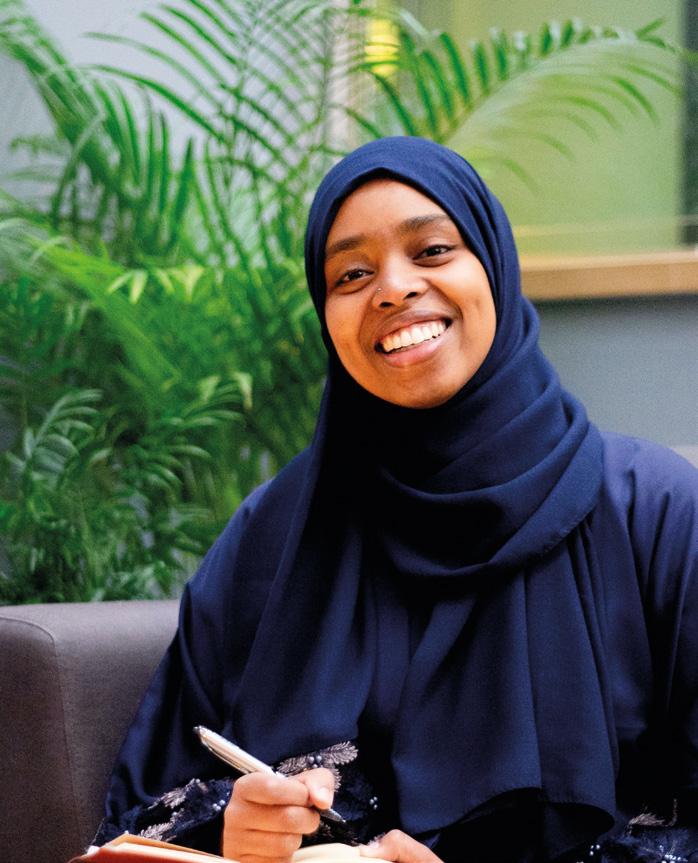
Personal branding and design for nondesigners.
Most memorable thing about your branding? Crazy, vibrant colours (and my colourful jumpers)

Fave brand-building platform? The Dots: it’s like LinkedIn but for creatives.

Most memorable thing about your branding? The colours: bright yellow is the primary colour.
For more help with personal branding (plus free resources) visit hypeyourself.com
Anita Ellis is a copywriter, linguist and cheese enthusiast. Anita specialises in clear brand messaging, punchy website copy and compelling case studies. When she’s not helping business owners communicate their superpowers, she’s getting creative in the kitchen or devouring the dictionary to win at Scrabble.

55 Issue Nine // Spring 2023
Having a brand makes me feel like a company that knows what it’s doing, rather than ‘winging it’. I don’t think it’s a coincidence that I now have the best clients I’ve ever had.
▼ ▼
I’m dyslexic and growing up I felt overlooked. I want to make sure that everyone can be seen and heard whatever their story and business size!
/anitaellis
Is it possible that the crafts, doodles and creative noodles we get up to in our spare time could actually make us smarter, happier and better at our jobs?
pleasures – or something to turn into another income stream – but important life strands, valuable in their own right.
Taking a regular creativity workout
Historically, I have always felt a bit guilty about how my hobbies and “the work I should be doing” intersect. When I was in a salaried role, my creative (mainly musical) pastimes were always a delicious and dangerous distraction. Printing gig flyers on the work photocopier. Nipping out early to get to a 6pm soundcheck in Middlesbrough. Daydreaming about being in a rock video or on a world tour when I should have been listening attentively to this quarter’s KPIs. Now I’m self-employed, I have the luxury of organising my work time around my hobbies. I can head off for a midweek day in a recording studio without needing to book annual leave. I can block out an afternoon to work on a short story. But the residual guilt is there, that nagging sense of “I’m having too much self-indulgent fun for this to be a worthwhile use of my time.”
Yet it’s undeniable how much happier I am in my work when I make time for creativity elsewhere. Maybe, instead of being yet more damning evidence of my flakey magpie brain (ooh what’s this, looks fun, sign me up), my hobbies should be something to be celebrated. Not just guilty
Does
Even if you don’t consider yourself a creative service provider, running any kind of business demands an infinite supply of creative thinking. Having outside interests and hobbies can be brilliant for strengthening our inspiration muscles away from our day-to-day desk marathons. Creative cross-training, if you like.
Haroon Khan has been part of a weekly online freewriting group on Clubhouse (“Freewriting Workout” with Vanessa Walters and Gemma Weekes) for the last two years. As a freelance copywriter, it’s helped him power up his copywriting skills even further – but more than that, it’s a space for him to explore, develop and enjoy writing for himself.
“Once a week, I pop online with my fellow writers and we do a five minute free write,” he explains. “One person will give us a prompt and then we write non-stop for five minutes. No thinking, no editing, no censoring.
Then for the next hour or so, we all read our pieces out. No critiques are allowed. We focus on what we love about our fellow writers’ work. It’s a beautiful space where I feel held in love. My creativity is nurtured.”
The group is open to
56 Freelancer Magazine
having a creative outlet make you a better freelancer?
anyone and includes plenty of freelancers who have chosen self-employment as it gives them the flexibility to work on their creative and artistic dreams. It has helped Haroon improve his poetry writing to the extent that he’s publishing his first collection of poetry this year, “Love Takes Shape”.
“This space has made me a better writer and copywriter, more generous with my spirit and improved my mental health greatly,” he says. “I highly recommend every freelancer finds themselves a creative practice outside of work. If it is one that can be done in a community, then even better!”
Listening to Haroon is awe-inspiring – how many of us have creative dreams that we could push a little further along the line by carving a tiny space into our days? And having that dedicated regular time slot means that even when working life feels a bit meh, there’s always a bit of magic in every week, just for you.
Stitching creativity into your working day
You don’t even need to aim for a big goal like writing a book (or making a record, as I keep telling myself as I try and fail to programme beats in Garageband for the hundredth time) to reap the benefits of regular creative practice. Sometimes just Doing The Thing can stretch our brains in helpful ways.
Independent Customer Researcher
Lynda Thompson knits and crochets as a hobby and has found it a surprisingly helpful tool for focus – particularly during online meetings and talks.
“It keeps my hands busy so I listen and
don’t get distracted,” she explains. “It’s especially useful if I’m expected to learn, digest information or act in some way because it ensures the thing I’m meant to be paying attention to gets my full attention.”
Lynda points me to several articles extolling the benefits of knitting for stimulating the brain stem and aiding focus. I’m in love with the thought of whipping up some woolly socks and turbolearning while you do it. But what do the other people on her calls make of it?
“Whether it’s a video call or in person, I would always judge whether it’s appropriate and explain why I do it – it wouldn’t be right for all situations. I’ve often asked workshop hosts or speakers in advance if they’re ok with it,” Lynda says. “On the whole they respond well to it. It’s a mix of people being impressed at my skill and perplexed that it’s a good thing for me to do.”
Lynda’s knitting feels like vindication for making creativity a part of your working day in unexpected and radical
ways. What can your outside passions bring to your work that you don’t even know about yet? If you dare to blend the two, what glorious alchemy might occur?
Letting go of your creative inhibitions
For transformative coach Chris Kenworthy, what started as a creative distraction has become something of a way of life. Chris has been immersed in the world of improvisation (unscripted comedy and drama) for two years and credits it with transforming his approach to his coaching work and, well, pretty much everything.
“It feels like coming home to me,” says Chris. “It challenges how I habitually relate to the world, yet feels totally natural and blissful. Improv helps me embrace mistakes, commit, slow down, tune into emotions and my body.”
This is so similar to the kick I get out of playing live music as part of a band – the sense of being a group carried along by something greater than you in that elusive flow state. But with improvisation, there
57 Issue Nine // Spring 2023
>
“How many of us have creative dreams that we could push a little further along the line by carving a tiny space into our days?”
are no rehearsed songs, no patterns to follow. This is a performance that could go literally anywhere – a prospect that is equally terrifying and liberating.
It must be fantastic training for working with beautifully imperfect humans as a coach. There’s no template. No map. The joy is in the journey and not knowing where you’ll end up or how you’ll get there. And you’ll get the most out of it by jumping right in.
“I get such joy playing scenes together, just making stuff up as we go along, in the moment, despite not knowing what happens next,” says Chris. “That’s human being for me. It’s thrilling, scary, funny,
moving, and you always feel so totally alive while performing it.”
Chris has travelled around the country and as far as Berlin to take part in improv courses and retreats and is now looking at setting up a group closer to home, in Leeds.
“I’d like to deepen my improv by playing with a regular group of improvisers,” he says. “I’m building the thing I want to see – a welcoming, fun event here on my doorstep that would make me (or people like me) want to come out and play.”
The word “play” feels significant. Something we do endlessly as children but that so many of us lose the time, freedom
and bravery to do as grown-ups.
Maybe that’s because the world we live in is very good at making us think that every single thing we do in adult life needs to be conventionally productive in some way – developing skills we can make money from, keeping our bodies and minds fit and healthy so we can keep earning, nurturing the next generation of workers.
But when our hobbies are primarily playtime just for us, surely that’s when they give us the most?
They give us ring-fenced time to get it wrong, to try again, to connect with others, to learn, to grow, to express ourselves – to make a beautiful, life-enhancing mess. And often they do help us in our work, but we shouldn’t need that as an excuse. As a grounding for life as a free, happy human? They give us everything we need.
Now what time was that soundcheck again? I think I’d better be off…
Find Haroon Khan on Instagram and Twitter @harooncreates and on LinkedIn.
Find Lynda Thompson on Twitter @LT_Customer1st on Instagram @lyndathompson23 and on LinkedIn.
Find Chris Kenworthy on Twitter @Chris_Kenworthy, on Instagram @chriskenworthy and on LinkedIn.

58 Freelancer Magazine
Penny Brazier is a freelance writer and copy coach based in Leeds.
@penthemighty
“The sense of being a group carried along by something greater than you in that elusive flow state.”




44% That’s how many freelancers are not contributing to a pension in the UK. Don’t be a statistic. Scan me www.isipp.co.uk/freelancer APPLY ONLINE 24/7 As with all investing, your capital is at risk. The value of your portfolio with us can go down as well as up and you may get back less than you invest. We do not provide investment advice. iSIPP is a trading name of iPensions Group Limited registered in England and Wales with Company Number 03683070 whose office is at 2nd Floor, Marshall House, 2 Park Avenue, Sale, M33 6HE. Authorised and regulated by the Financial Conduct Authority, Licence Number 464521. 44% That’s how many freelancers are not contributing to a pension in the UK. Don’t be a statistic. Combine your old pensions online and contribute with ease Choose from over 100 funds from world leading fund houses Manage your own pension 24/7 f rom anywhere in the world Simple application, transparent and competitive pricing TAKE CONTROL OF YOUR PENSIONS WITH iSIPP Scan me www.isipp.co.uk/freelancer APPLY ONLINE 24/7 As with all investing, your capital is at risk. The value of your portfolio with us can go down as well as up and you may get back less than you invest. We do not provide investment advice. iSIPP is a trading name of iPensions Group Limited registered in England and Wales with Company Number 03683070 whose office is at 2nd Floor, Marshall House, 2 Park Avenue, Sale, M33 6HE. Authorised and regulated by the Financial Conduct Authority, Licence Number 464521.
Hold Me Closer, Tiny Gardener
Rowan Ambrose is here to convince us that gardening can be easier, cheaper and less time-consuming than we think.

You can garden almost anywhere. On a cramped, windy balcony. In a dark courtyard in the middle of a city. Or on a cold windowsill. You can garden with a spoon instead of a trowel, pick up seeds cheaply, spend ten minutes a week tops, and have some gorgeous flowers to look at or some delicious vegetables to eat. You can’t beat it.
Imagine if we all created tiny gardens. And what it would look like from the sky if they eventually joined up. Scented, multicoloured ribbons spangled with joyful bees, birds and butterflies feasting on what you’ve planted.

Gardening has been one of my autistic special interests for as long as I can remember. Spending time outside and watching things grow is very therapeutic—literally grounding.
Always grow what you love
Does the idea of growing billowing garlands of fragrant roses excite you? Plant a rose. Do you dream of picking a crunchy apple fresh from the tree? Research apple trees. Maybe you want to create a wildlife haven in your tiny space? Grow anything stamped with the RHS Perfect for Pollinators logo.
60 Freelancer Magazine
Gardening a tiny space is relaxing
Becoming absorbed in nurturing new life and watching it develop is enthralling. You’ll escape your deadlines and responsibilities as you soak up the wonder of nature. Studies in Sweden show that gardening even a tiny space like a balcony can have a significant positive impact on your mental health.
Tiny gardens make a huge difference
We’re all aware of the enormous challenges posed by climate change. Making the choice to garden in your tiny space is empowering. You’ll be helping to mitigate air pollution and flooding. Growing plants will reduce noise, filter wind, and regulate temperature extremes around your house. And provide valuable food and shelter for wildlife.
Micro gardening
If you have the tiniest space, you can still grow stuff. Salad leaves like succulent spinach, peppery rocket and crisp lettuce will happily grow on a windowsill. Herbs like chives, mint, oregano, parsley and thyme will add a fragrant boost to your kitchen windowsill or balcony. If you snip only a few leaves or sprigs at a time, they’ll keep growing for ages.
Tiny gardening
If you have a backyard or front steps, you have masses of choices for planting. You can try woodier herbs like rosemary, thyme or lavender. Or, if your tiny space gets around five hours of sun or more in summer, how about a rose in a container? Ignore anyone who says you can’t—they’re wrong. You need a big pot (40-50cm wide and deep will do), some John Innes No 3 compost (from any garden centre or online), and a rose.
There are hundreds of rose varieties in a huge spectrum of colours—even stripy ones. Roses with open centres tend to be pollinator friendly. Many have opulent fragrances which will perk you up as you walk past. And with lots of roses, the more you cut, the more flowers you get, so you can have some for indoors too.
Fruit trees come in patio varieties
scramble up ugly sheds, covering grotty fences and hiding less-than-lovely views. Tops picks include honeysuckle, jasmine and grape vines. Ivy is great if you could do with an evergreen screen.
Edible flowers

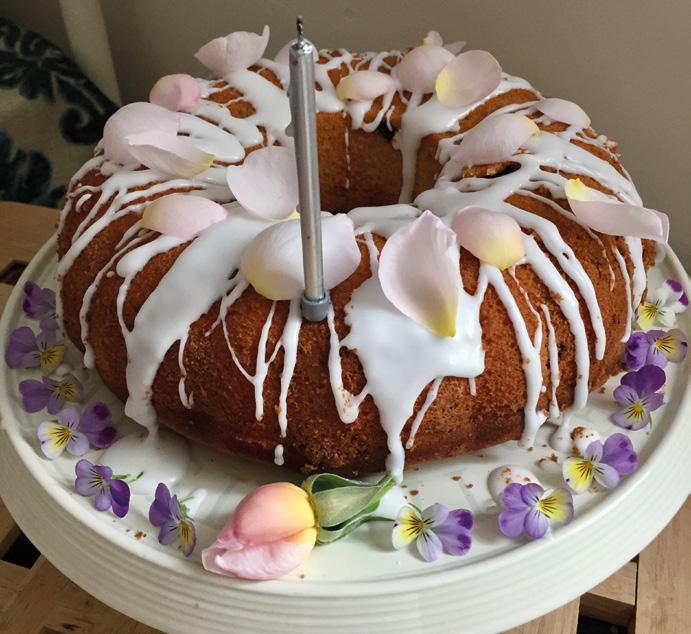
Channel your inner celebrity chef and grow gorgeous flowers for decorating your food. Great choices here are viola, borage, nasturtium and calendula. You can eat rose petals and lavender too. As with anything you eat, it’s possible to have an allergic reaction, so please go carefully at first.
Scented flowers
My favourites. Most of the plants in my garden have either fragrant flowers or foliage—sometimes both. You can easily create your own scented sanctuary by growing a few carefully chosen plants.
which have been developed to grow well in containers. Apples, pears, plums and cherries will grow contentedly in most climates. Lots of tree nurseries have excellent websites which tell you if a fruit tree will develop blossom and fruit by itself (self-fertile), or if it needs a pollination partner. If you only have space for one tree, it’s best to choose a selffertile variety.
Strawberries are simple to grow in pots—it helps to keep the slugs away too. Imagine picking luscious, fragrant and gleaming berries for breakfast.
Vertical gardening
Always remember to look up. Lots of climbers only need a tiny amount of soil at their bases for their roots or will grow in containers. They’ll enthusiastically
Some top picks, which are all pollinatorfriendly, low maintenance, and have long flowering seasons, include:
Growing just these five plants will give you colour and scent almost all year round.
What will you plant first? ●
Rowan Ambrose
Gleefully writing sensory-rich copy and content about the joys of gardening, nature, niche fragrance and chocolate. Tiny garden consultations coming soon.

61 Issue Nine // Spring 2023
VividPeaksCopywriting.co.uk ● Honeysuckle ● Repeat flowering rose ● Lavender ● Hardy geranium ● Nepeta
Newsletter Love
Snooping behind the scenes on four of our favourite freelance newsletters.
Newsletter owner/ author
Austin Kleon
I am a… Writer who draws
I am based in... Austin, TX
Name of newsletter
It’s eponymous
What’s it about?
Weekly art, writing, and creative inspiration.
What was the subject line of the last one you sent out?
“No expectations”
What day is it sent on?
Paid missives on Tuesday, free lists of ten on Friday
How frequently?
Every week
How long has it been going? 10 years
Number of subscribers 135,000+
Email service provider used Substack
How far in advance do you write your newsletter? I type it the day before, although I write it in my head all week.
How do we subscribe? austinkleon.substack.com
Where can we find you on social? Austinkleon.com, @austinkleon on Twitter and Instagram

62 Freelancer Magazine
@
Clayton Cubitt
Newsletter owner/author
Nia Lizia Carnelio
I am a…
B2B SaaS, Tech, and Ecommerce Writer and Book Marketer

I am based in... Amsterdam, the Netherlands
Name of newsletter
Not Controversial
What’s it about?
Things we all think about but don’t discuss out loud.
Think hush-hush topics like money and pay transparency or stuff we should think about more — the disproportionate cognitive/mental load on women, how making friends as an adult is so ridiculously difficult, or even how rest has become something we need to “earn” in today’s world.
What was the subject line of the last one you sent out?
“Why are public spaces so uncomfortable nowadays?”
What day is it sent on?
Tuesday
How frequently?
Every week
How long has it been going?
Since May 2021
Number of subscribers
986
Email service provider used Substack
How far in advance do you write your newsletter?
I maintain a really organised Notion dashboard of ideas and sources to back my ideas up and when inspiration strikes or the algorithms deliver the resources to me.
But the actual content is written the very day the newsletter goes out — I almost always “schedule” it to publish within 20 minutes once I’m done!
How do we subscribe? niacarnelio.substack.com
(It’s free to subscribe, and I’ll send you a cool list of helpful freelance writing newsletters as a thank you if you’d like!)
Where can we find you on social?
@sleepyhollowkid on Twitter
@perceptivemadness on Instagram
63
Issue Nine // Spring 2023
Newsletter owner/author
Nick Parker

I am a… Writer
I am based in...
The internet (Also, Oxfordshire)
Name of newsletter
Tone Knob
What’s it about?
Each issue, I dissect in excruciating detail a brand that’s doing something interesting with its tone of voice or its words generally. It’s part ‘close reading’ (what academic types would call it) part ‘unboxing, but for words’. (what the YouTube kidz would call it).
What was the subject line of the last one you sent out?
If hotels could speak... Oh, they can!
What day is it sent on? Fridays
How frequently? Once a month
How long has it been going? 18 months
Number of subscribers 5500! Which is frankly amazing.
Email service provider used Substack. (The wider Substack community is super-interesting and lovely.)
How far in advance do you write your newsletter?
I tend to write it over the course of a few days. I leave the Substack editor open in a tab and dip in and out. I try to have it finished mid-week for sending on a Friday. Often I’m still writing it 30 mins before hitting send.
How do we subscribe?
toneofvoice.substack.com
Where can we find you on social?
@nickparker on Twitter
Newsletter owner/author
Angela Lyons

I am a… Freelance Graphic Designer
I am based in... London, UK
Name of newsletter
Font Love Friday and Other Designery Things
What’s it about?
Fonts, design and freelancing. Also what is happening in my world. I highlight a font for the month and discuss it. I also share resources that have been useful or have inspired me. From typeface libraries, to design inspiration and freelance tips.
What was the subject line of the last one you sent out?
Sharing is caring
What day is it sent on? Friday
How frequently?
Last Friday of the month
How long has it been going?
8 months - it started in July 2022
Number of subscribers 191
Email service provider used Squarespace
How far in advance do you write your newsletter?
Throughout the month I make digital notes/ bookmarks in Notion of things that have caught my attention or that I have worked with. I start writing the main part of it a week before it goes out - usually on a topic that has caught my attention or is personal to me. It is scheduled the day before it goes out, as up until then I’m still tweaking it.
How do we subscribe? lyonscreative.co.uk/ work/font-friday
Where can we find you on social?
LinkedIn: /AngelaLyons1
Instagram: @Ange_Lyons
64 Freelancer Magazine
SEO for copywriters… …As it is CopywriterSEO.co.uk Book a 1-2-1 session Nikki Pilkington
The Deaf Chefs
Deaf sisters Coco and Mandy are founders of The Deaf Chefs food truck and catering business. Based in Chelmsford and East London, they have big plans to feed their geographical communities while supporting young deaf people in the wider deaf community.

Hey Coco - tell us about you and your sister…
We’re both chefs, and we’re both deaf (the clue is in the name!). We fit The Deaf Chef business around our other work. We’re doing what most people do in the early stages: working hard, fitting things in, and doing our best.
Where did the idea for The Deaf Chefs food truck come from?

The idea was to start a cafe - but the costs were impossible. Mandy came up with the food truck idea, and it snowballed from there. I found the caravan on eBay and couldn’t resist - it was so beautiful. But we weren’t prepared for how much it would cost for repairs. We were very impulsive, but we won’t give up. The deaf community needs this truck.
How’s the future looking for The Deaf Chefs?
We have big dreams. Yes, we’ll... serve up tasty street food, but we’re doing it our way: supporting the deaf community as we go. We’ll be giving jobs and apprentice opportunities to young deaf people who face barriers to work.
And we’re planning to offer British Sign Language classes - helping more people in the hearing world connect with the deaf community.
What’s The Deaf Chefs’ signature style of cooking?
Mandy loves deep, earthy flavours. Lots of sauces and slow-cooked meat. I love a good dirty wrap straight from the BBQ. We create these flavours in big and small ways - in our bold, tasty street food and in the canapes and nibbles we make for events. We cater to veggies and vegans too. We love playing with flavours and styles to get it just right.
OK, I’m hungry now - what are you serving up today?
Freelancer Magazine
FOOD
Parmesan shortbreads with mozzarella, cherry tomatoes and pesto canapes
INGREDIENTS:
• 15 cherry tomatoes
• 1 tbsp chopped thyme
• 150g plain flour
• 75g soft butter, in pieces
• 40g Parmesan (or vegetarian alternative), grated
• 1 medium egg
• a sprinkle of paprika
• a sprinkle of poppy seeds
• 275g block mozzarella
• 50g fresh green pesto
METHOD:
1. Preheat the oven to 120°C, fan 100°C, gas mark ½. Halve the tomatoes, place on a baking tray, cut sides up. Sprinkle with thyme, season and bake for 1 hour.
2. Meanwhile, sift the flour into a bowl and add the butter and Parmesan. Lightly beat the egg in a cup and add half to the bowl.
3. Use your fingertips to rub the butter into the flour and bring everything together to make a dough. Tip it out and flatten it into a disc. Wrap in clingfilm; chill for 30 minutes.
4. Remove the tomatoes from the oven; increase the temperature to 160°C/fan 140°C/gas mark 3.
5. Roll the dough pieces to 5mm thick. Using a 5.5cm cutter, stamp out 30. Brush with the remaining egg; sprinkle over a little paprika and some poppy seeds. Bake on a greased baking tray for 10 minutes. Cool on a wire rack.
6. Thinly slice the mozzarella and stamp out 30 pieces using a 3.5cm cutter. Top each piece with a little pesto, a piece of mozzarella, a little more pesto and a tomato half.
Where can we grab this grub if we don’t want to make it ourselves? We’re planning on being at more of the mainstream food markets in London and Essex. Follow us on Instagram @TheDeafChefs to find out more or to book our catering services. >

67 Issue Nine // Spring 2023
FOOD
1. Don’t be afraid to ask questions
Deaf businesses face a lot of barriers, but they will have found so many ways to face them and move past them. Trust their expertise and ways of working - and have open conversations with them at the very beginning to find out how they work best and what you can do to support them while they support you.
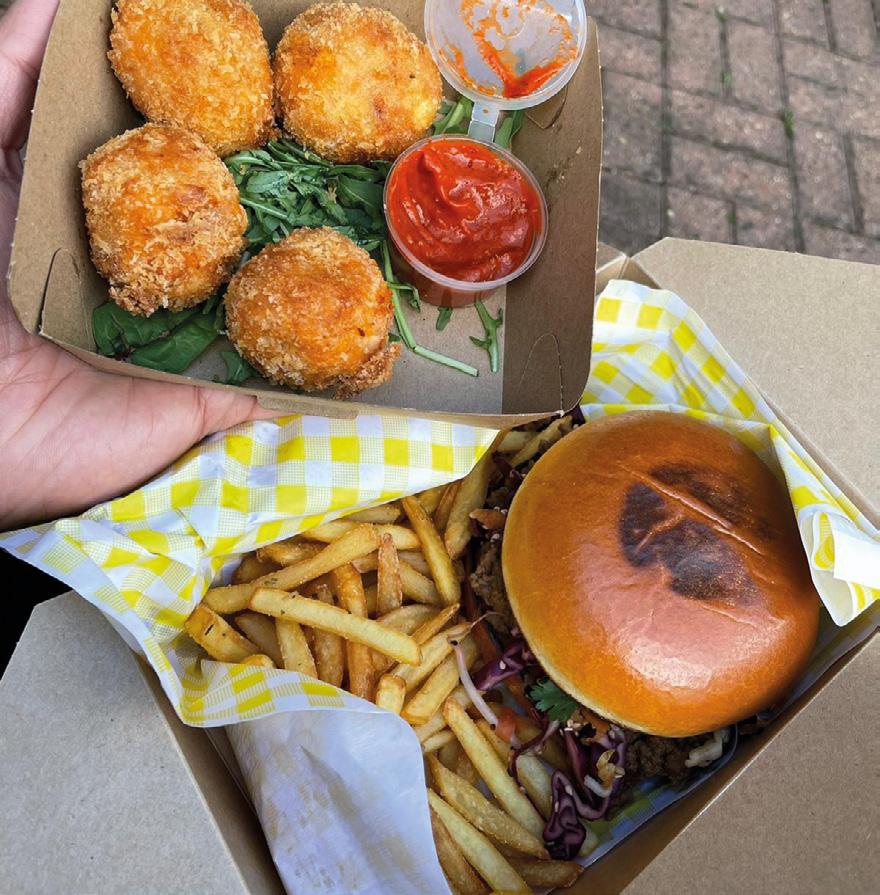


2. Working together means accepting it won’t always be perfect
Any relationship has to start somewhere. Working with deaf people is no different, but if your starting point is open communication and having the confidence to ask honest questions, then you’ll develop your own communication style - and a strong relationship will grow. Your deaf freelancer will have so many skills they’ve adapted that will help you in your business - it’s not all about reinventing the wheel just because you can hear and they can’t.
actively seek deaf business owners and freelancers out. But do your researchwe all hear and communicate differently. Some prefer BSL, some prefer signspoken (aka Signed Supported) English. Ask directly at the very beginning about the best way to communicate and enjoy getting to know each other.

68 Freelancer Magazine FOOD The Deaf Chefs’ advice for working with deaf business owners and freelancers: Support The Deaf Chefs
and Mandy are running a crowdfunding campaign to get their big dreams
the road.
to gofund.me/3ee49536 Deaf Awareness Week runs from 2nd to 8th May. Visit ukcod.org for more details.
Coco
on
If you’d like to contribute, go
THE ESSENTIAL GUIDE TO TAKING CONTROL OF YOUR FINANCES
IDENTIFY POOR MONEY HABITS
SET A BUDGET PLAN THAT WORKS FOR YOU
DEMYSTIFY FINANCIAL TERMS AND PROCESSES
CONTROL DEBT, DON’T LET IT CONTROL YOU
UNDERSTAND INVESTMENT AND RISK
‘The Money Basics will prove that becoming your own financial hero is a lot simpler than you think’
 Peter Komolafe
Financial expert, TV personality and host of podcast
Peter Komolafe
Financial expert, TV personality and host of podcast

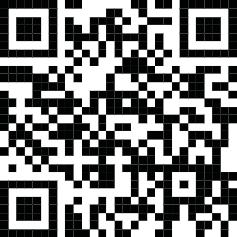
The Conversation of Money
AVAILABLE IN PAPERBACK, EBOOK AND AUDIOBOOK SCAN TO FIND OUT MORE
Coworkers
Thank you for sending in your pet pictures and stories. Keep ‘em coming to mary@freelancermagazine.co.uk and we’ll keep featuring them.



These are our pound pussies, Ronnie and Keith. They’ve been an integral part of our home life since 2014 and constant freelance work buddies for me since 2016. Not as rock ‘n’ roll as their Rolling Stones namesakes (or maybe they are?), but just as relevant. Using my office (and the whole house) as some kind of massive parkour zone, they’re impeccable timekeepers (for their own food), heroic hair shedders (especially Ron), incredible time wasters (not

Freelancer Magazine
Ronnie Keith
Luna is a one-year-old Maine Coon X and rules the house! She is very vocal and will tell you exactly what she wants. She likes to stay by my side as I work and is either asleep on the desk or peering at me from behind the monitor trying to attack. Luna is great at getting me up and working early by bringing me all of her toys and meowing or jumping all over me until I get out of bed. The joy of having a kitten but I honestly wouldn’t have her any other way.
Kirsty Feeney, Digital Marketer @digital_fridays
My little co-workers are one-year-old Murphy, the Beagle x Cocker Spaniel, and Stitch - an almost 4-yearold guinea pig. Stitch (affectionately known as Pigsie) is cute as a button, intelligent, and even comes to call. She loves being a free roam piggy, ‘popcorning’ around the living room, almost as much as she loves spinach! Murphy is a monster. He’s a bouncy, excitable, little sock thief but, when he looks at you with those big puppy eyes, it’s hard to be cross with him. He’s the most affectionate, snuggly puppy and often interrupts whatever I’m doing by nudging his nose under my arm and sprawling himself completely across my legs. I wouldn’t have him any other way. They’re both real characters and I can’t imagine life without them, even if they do occasionally cause chaos.
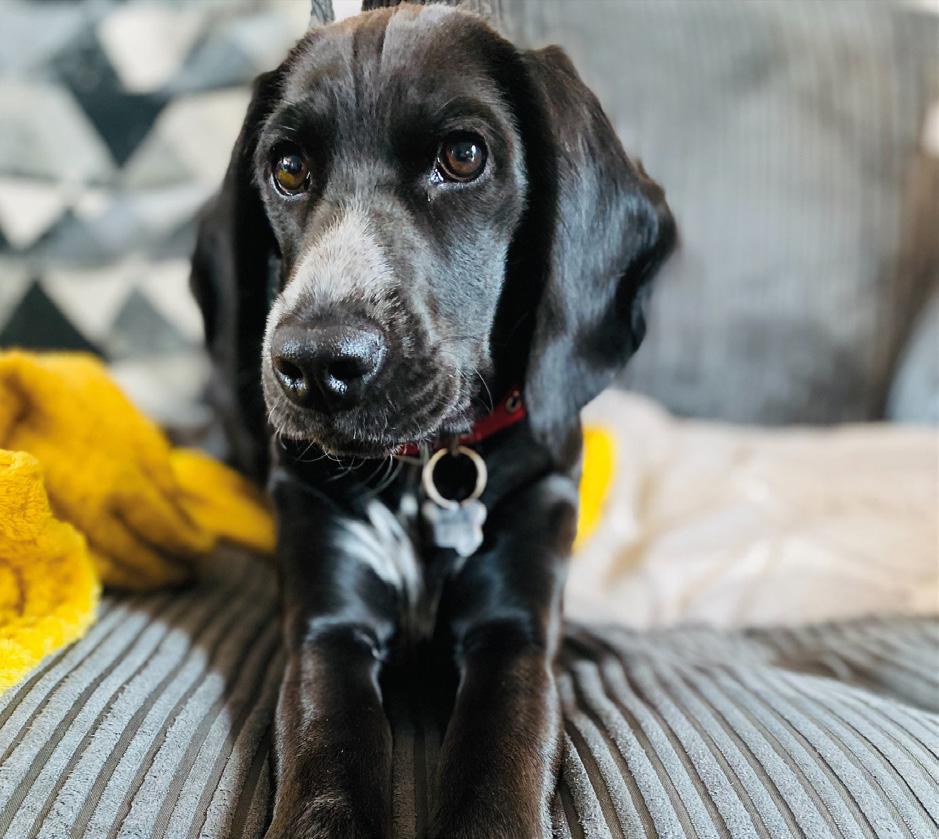
 Laura Burrows, Content & Copywriter /laura-burrows11
Laura Burrows, Content & Copywriter /laura-burrows11


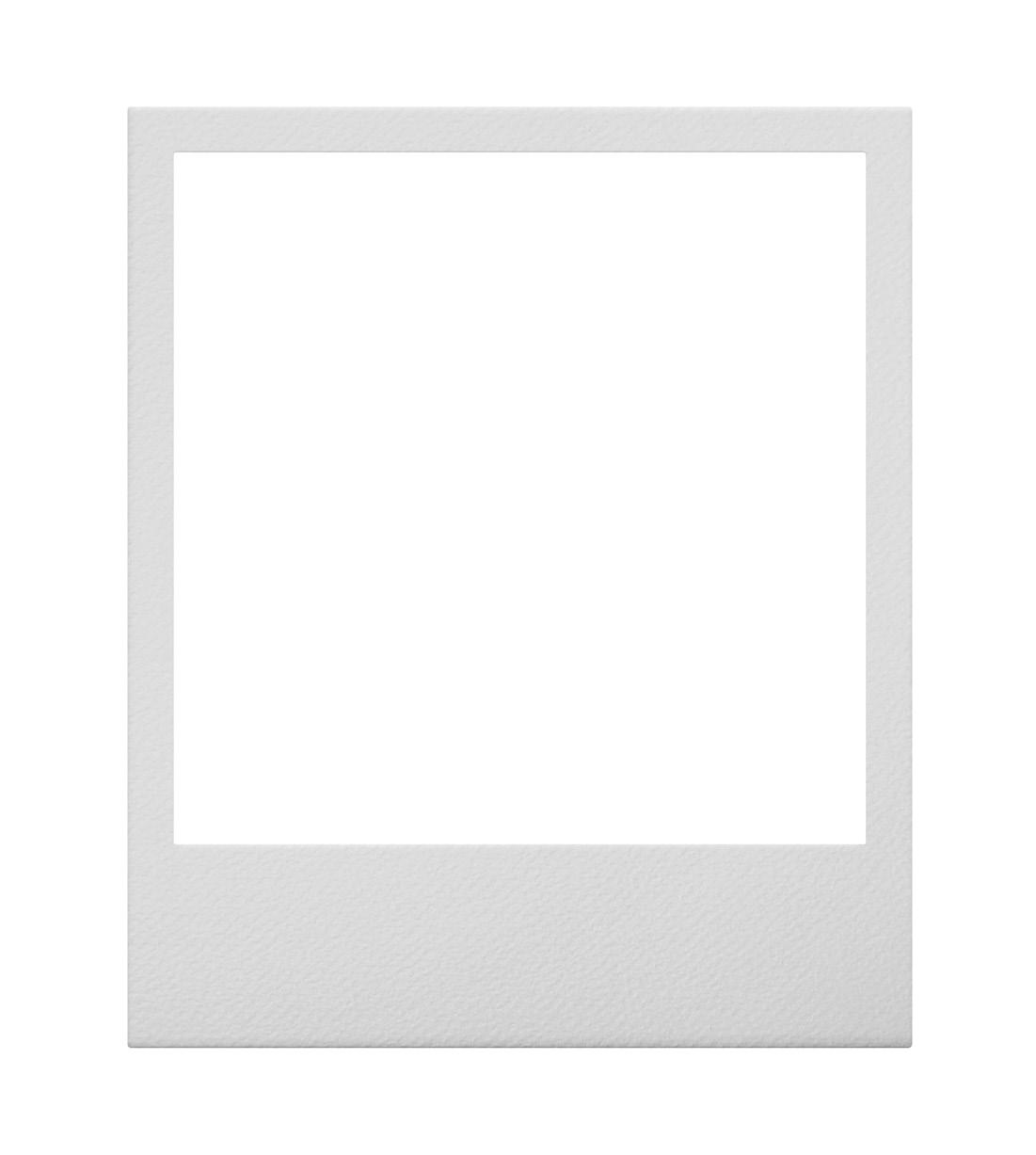
 Murphy Stitch
Luna
Murphy Stitch
Luna
Freelancing and Self-Employment
THE STATS
21% of disabled people reported that they had made the move to selfemployment for better work or job satisfaction.3
13% of all American freelance artist designers are LGBT.1
US: 75% of freelancers now earn more money than they did in their salaried roles.4
The global pandemic hit creative freelancers 5 times harder than employees.5
8 in 10 people feel that creativity is critical to economic growth. Two-thirds believe creativity is essential for a wellrounded society, yet only 1 in 4 say they are living up to their creative potential.6

72% of people get their best ideas in the shower.7
43% of creative freelancers feel optimistic about their business after Covid.2

49% of male freelancers have been tricked by clients, and 38% of females report the same.8




72 Freelancer Magazine
1Zippia
/ 2Ipsos / 3IPSE / 4Upwork / 5It’s Nice That and Creative UK Group / 6Adobe Creativity Study / 7Insider / 8AndCo.
Buy the print, hear the podcast, eat the biscuits - beingfreelance.com
With the arrival of Spring, I’m wafting around wearing one less cardigan than usual, and it brings great joy indeed. Brighter days mean I have a much sunnier expression on my old coupon, and we’re all a lot chirpier Chez Sea as a result. I hope your home is officially less grumpy now winter is firmly back in its box, too.
Often, it’s the little things in life that make us happy, so I was pleased when Editor Sophie suggested an Etsy special for our creativity and design issue. Etsy has long been a source of shopping happiness for me, so it was a quick yes.
Getting to know the makers, artists and designer has made me enjoy the platform even more, and I’m glad to introduce them and their work to you.
As you’ll see - their challenges are our challenges. They grapple with marketing, lack of time and a need for visibility, just as we all do. And in a crowded marketplace like Etsy, it would be easy to assume there’s more frustration than joy, but that’s not the case. They carry on, facing up to the challenges and creating lovely things to bring happiness to others.
Why do they keep at it? Because they take great pleasure in their craft and have a deep understanding of its value in the wider world.
Lessons we could all live by - don’t you think?
Send your recommendations to abi@freelancermagazine.co.uk
by Abi Sea
Prepare to fall in love with a new hobby
Dropcloth
From £13
How long have you been selling on Etsy?
I’ve been selling on Etsy since 2010almost 13 years!
What’s your best seller?
My first product was the original sampler (see picture) and it’s still BY FAR my best seller, partly because there’s a Creativebug online class that goes along with it.

What have been your biggest challenges?
I’ve had some growth challenges. It’s hard for me to ask for help and to hire help. When I had my second kid, I realised very reluctantly that I needed to hire someone to help with shipping. I’m very frugal,
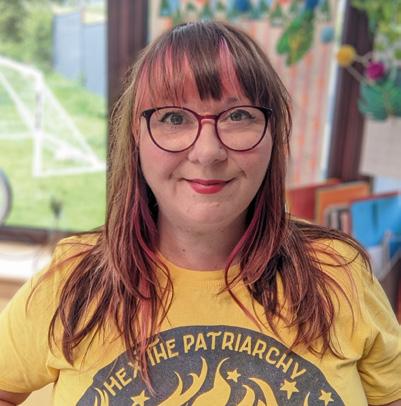
so resisted that for a long time. I shouldn’t have waited. Hiring my assistant has freed me up to design new products and focus on marketing. I’m glad I did.
How did you get started?
By accident. I printed a few embroidery samplers (the Original) and sold them at a very small craft fair. Some of my customers were bloggers and after the fair, my inbox was flooded with folks asking where they could buy one. I was visiting my mom at the time and used her dial-up internet to start an Etsy shop. I was a professor at an art school. I had no intention of making the Etsy shop into a full-time business. I assumed interest would wane quickly. It did not. Now Dropcloth Samplers is my full-time job, and I’m so grateful.
Where can we find you?
Etsy: /DropClothSamplers
Instagram: @RebeccaRingquist
Website: dropclothsamplers.com
74 Freelancer Magazine The Spring Edition
Etsy Special
Personalised
From £14.50
How long have you been selling on Etsy?
Since 2018.
What’s your best seller?
Personalised snack bowls.

What have been the biggest challenges?
Getting seen on Etsy and bringing traffic in. I find it challenging to find the right tags when listing an item.

How did you get started?
I’ve always been crafty and find it really relaxing to make things for other people. I started by making some friends a handmade gift for their new babies and had other friends ask if I would make them one. It kind of grew from there, really.
Where can we find you?
Etsy: /FlamingoCrafting
Instagram & Facebook: @FlamingoCrafting
If you’d like to suggest a product to feature in our next issue (the Summer Collection) then please email abi@freelancermagazine.co.uk.
I wasn’t. It took me a while to understand what was happening and the implications for my business. I appealed the decision, but I’m now permanently banned. The challenge for me is to remain positive, believe in what I’m doing, and keep going!
How did you get started?
From £18
How long have you been selling on Etsy?
Four years
What’s your best seller?
It’s a tie between an LED light called ‘The Vadgin Mary’ or the small hand-painted badge ‘The Slinky Dinky’.

What have been the biggest challenges?
Selling online. In January 2020, I was restricted from advertising or promoting my work on Facebook and Instagram.
I joined two other artists to create a giveaway of our work. The other two artists were allowed to promote the competition, and
I’ve been selling paintings and badges at festivals and events for years. Often the badges would be in my pockets, getting sold on the dance floor. They were often rude, silly, and a bit of fun. The most popular badge was one with a fanny painted on it. So I decided to turn this into a business: Vadge Badges!
Where can we find you?
Facebook: www.facebook.com/ vadgebadges
Etsy: /vadgebadges

Instagram: @vadgebadges
Website: vadgebadges.com
75 Issue Nine // Spring 2023
Every vadge deserves a badge! Vadge Badge
baby gifts and homewares
Crafts
Flamingo
Red Beau
From £2.50
How long have you been selling on Etsy?
I have been selling on Etsy since 2016, but I didn’t niche down (and really get going with my business) until 2019.
What’s your best seller?
The Superhero mask craft kit. It’s a lovely quality little eco-friendly craft pack that is fun to make and then play with. In fact, superhero mask sales doubled in 2022!

What have been the biggest challenges?
During the lockdown, there were no children’s parties, so that was a challenging time. I am not the kind of person to sit back and do nothing, so I pivoted and designed eco-friendly kids’ holiday let packs
because every time self-catering accommodation was allowed to open in the UK, they were really busy. They were a lifesaver at the time and very popular.
How did you get started?
When my children were younger and invited to a lot of class birthday parties, I noticed that they usually received the same plastic whistles, stretchy men and bubbles in their party bags which cluttered up the house and held their attention for only a short time. I didn’t like the idea of that much plastic waste for just a few minutes of fun, so I used my background in design to develop my own range of eco-friendly alternatives.
Where can we find you?
Etsy: /RedBeauPartyBoxes
Website: redbeau.com
Facebook: /RedBeauPartyBox
Instagram: @RedBeauBox
How long have you been selling on Etsy?
We first listed on Etsy in 2016.
What’s your best seller?
Three Month Friday Night Curry Subscription - every month we send a new box with recipes and spices to make a whole curry spread for four people (including all the sides, chutneys, bread, etc.).



What have been the biggest challenges?
During the first lockdown, orders more than quadrupled, so that was hard work to get them all out on time!
How did you get started?
We started in 2003 by supplying spices and blends to restaurants like the Fat Duck and Rick Stein.
We would send orders through the letterbox and realised the ingredients could be measured out to make recipes. That became the world’s first recipe subscription (as far as we’re aware!).

Where can we find you?
Etsy: /TheSpicery
Social: @The_Spicery
76 Freelancer Magazine
Craft kits and party packs for big and little kids
Spicy and nice(y) The Spicery From £28
How long have you been selling on Etsy?
I opened the shop in 2018, but I’ve been focusing on it more in the past eight months.
What’s your best seller?
The collection of 23 custom feather frames. You upload them as templates to use in social media or anything else you need. They’re very online. They’re very pretty.

What have been the biggest challenges?
I’m disabled through chronic ill health, and fatigue is my nemesis. My biggest challenge is trying to fit everything in. I have so many ideas about my business, but the reality is limited time.
From £8
It takes time to build a following and a customer base on Etsy but you have to keep at it. Perseverance is key.
How did you get started?
My first business was helping people who sew turn their passion into a business. I quickly got interested in templates and trackers and started creating my own for my clients. I was frustrated by the lack of frame templates on Canva so worked out how to create my own and then started selling them. Where can we find you?

Etsy: /NickyMerrickDesigns
Instagram and Pinterest: @iamnickymerrick
From £13
How long have you been selling on Etsy?
I joined Etsy around October 2021.
What’s your best seller?
I have two. One seasonal and one year-round. My Christmas
comforter for babies and a doublesize memory blanket. Its the most popular size I make, made from people’s precious clothing - like baby clothes, uniforms, special t-shirts. Whatever brings back the memories.

How did you get started?
I was hesitant to get on Etsy as I have a website I sell from. But people don’t always want to buy from it. I thought Etsy was a platform that people trusted and it would get me in front of many more people that didn’t already know my products existed.
Where can we find you?
Etsy: /InCraftCorner
Facebook & Instagram: @InCraftCorner
THAT T-shirt
After my Hex the Patriarchy tee became more popular on LinkedIn than I am, I thought it only right to track it down for you. You’re welcome!

From £29
Available on Etsy by FabulouslyFeminist
77 Issue Nine // Spring 2023
Sweet dreams are made of these In Craft Corner
Angelic digital frames for photo editing Nicky Merrick Designs
What We’re Listening To…
The Chatty Freelancer
A brand new, refreshingly honest podcast about life as a freelancer in 2023. Chloe Marie Doyle has a friendly conversational style (it’s called The Chatty Freelancer for a reason!) and serves up funny stories, anecdotes, experiences and tips to help you make your way through your freelance day. It’s aimed at listeners who are new(ish) to the freelancing world, or those who fancy having a go at it, but we feel like this chatty podcast will bring a bit of motivation and comfort to you wherever you are in the freelancing game.

The Story of Woman
They say it’s a man’s world but what does that mean for the rest of us? Podcast host Anna Stoecklein finds out in this insightful, thought-provoking and often tongue-in-cheek series. Anna interviews expert female and trans authors to deepen our understanding of society by seeing it from a woman’s perspective. Stocklein’s guests are as diverse as they are fascinating, bringing their experiences from the economy, history, medicine, authority, marriage and construction. Every episode has space for you to consider your experiences and stories on the episode’s topic, and Anna encourages you to get in touch to share your story.
The Story of Woman attempts to rewrite the story of mankind so it can connect us all in the story of humankind. It’s a really, really great podcast.

78 Freelancer Magazine
What are YOU listening to?
If you have a podcast that you absolutely love - and think other freelancers will enjoy it, toosend details over to abi@freelancermagazine.co.uk , and we’ll take it for a spin.
Feel Better, Live More
Author, podcaster and GP for over two decades, Dr Rangan Chatterjee is on a mission to simplify health so we can all make better decisions for better physical and mental wellbeing. Every week he talks to health professionals and popular personalities who have expertise in topics that impact freelancers daily (and everyone else, really). It’s packed with stories, life hacks and tools to help you figure out how to work, eat, sleep, move, relax and live - better. Some episodes go deep - and are a real investment of time, so check out the ‘bite size’ episodes to get a flavour of each one before diving into the conversation.

Writing might be the focus of this podcast, but it’s so much more than that. Award-winning author, Beth Kempton, reaches across the ether from her podcast studio and acts as your guide as you reconnect (or connect for the first time) with your creativity. Beth talks openly about the emotional side of writing, sharing her experiences to help you begin a relationship with writing that will fulfil and thrill you. Bring a notepad and pen because there’s a writing exercise every week, making The Fearless Writer part podcast, part masterclass. Enjoy!

79 Issue Nine // Spring 2023
The Fearless Writer
What We’re Reading...
The Joy of Saying No: A Plan to Stop People Pleasing, Reclaim Boundaries, and Say Yes to the Life You Want
 By Natalie Lue Harper Horizon
By Natalie Lue Harper Horizon
Nat Lue is a successful author, artist, podcaster and educator. She’s on a mission to show the world the importance of saying no to reclaim ourselves and our authentic lives. If you’re still playing roles learned in childhood and still putting others ahead of yourself - you need this book.
The Joy of Saying No will help you identify your people-pleasing style and habits. It gives you a sixstep framework and then teaches you how to establish healthier boundaries, foster more intimate relationships and fulfilling experiences, and reconnect with your values and authentic self.
How To Write One Song
By Jeff Tweedy Faber & Faber
Celebrated singer-songwriter Jeff Tweedy (Wilco) lays out his creative process on the table for all to feel inspired and motivated by. He shares his take on songwriting and gently guides you through the act of writing your first song.
A book to inspire creativity - wherever it lurks in your heart.
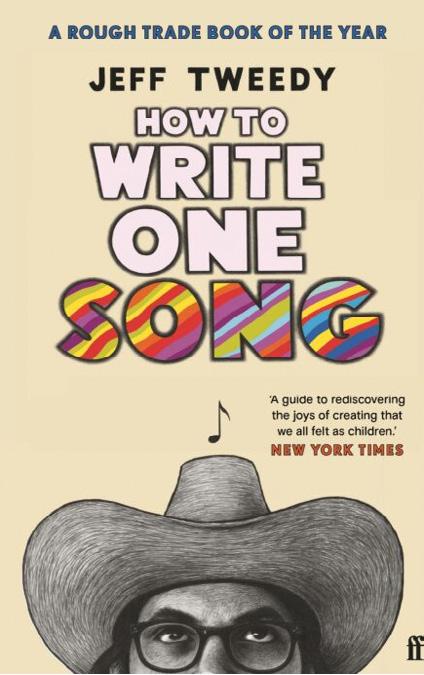
80 Freelancer Magazine
What We’re Learning...
How to take a selfie you can’t wait to share…

If you’re not ready to make the investment in branding photographs, or you want to take selfies for social (minus the cringe and self-loathing), then this short course is perfect for you. Gerri Campbell’s chilled style and clear talent for photography make this course easy peasy to follow, with instant results.
Visit gerricampbellphotography.com/business-selfie
Open Learn from the Open University


With over 1000 free courses available across eight subject categories, you’ll easily find something new to inspire and challenge you.
Brush up on some skills in your industry or niche - or learn something completely different just for kicks. The Open University add new courses every year, and each course comes with a free certificate of participation to pin to your wall with pride.
Visit open.edu/openlearn/subject-information
81 Issue Nine // Spring 2023
your recommendations to abi@freelancermagazine.co.uk
Send
Freelance Meet Ups


Following the social butterflies and lifelong learners of freelancing to find out where you’ve been, who you’ve met and what you’ve learnt.

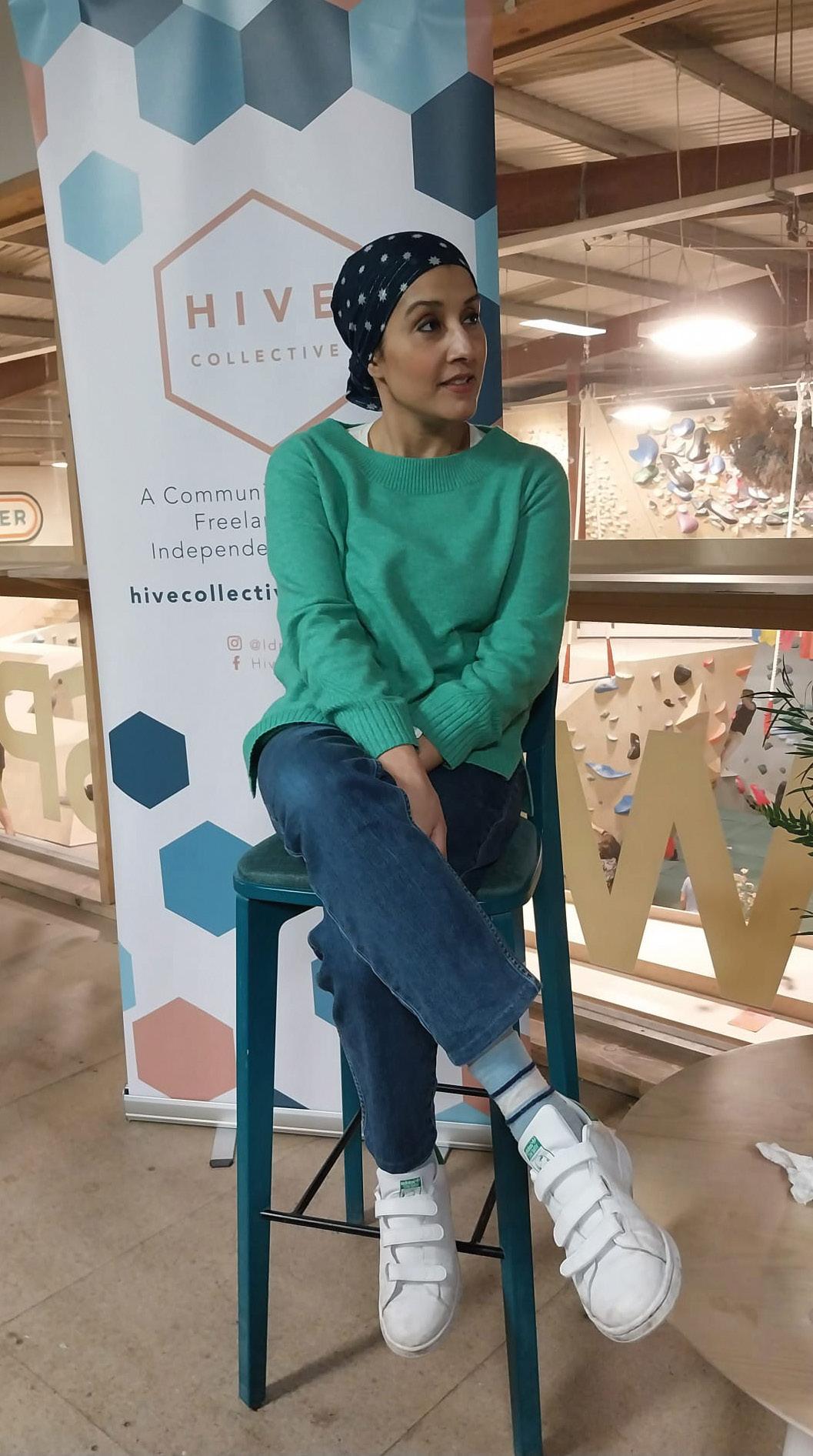
London (February)
Creative freelance community Hive Collective meet up quarterly in London with monthly online top ups. Most recently they hosted a talk from artist Zarah Hussain who shared her freelance experiences. hivecollectivelondon.com
Freelancer Magazine
Hive Collective
Adventures in Marketing
Edinburgh (February)
An incredibly successful first event for the AIM team. Thirteen guest speakers and workshops inspiring freelancers and business owners to choose their own adventure in marketing and beyond. Feedback highlighted how friendly and inspiring the day was (and the boozy after-party was a big hit too). adventuresinmarketing.uk






83 Issue Nine // Spring 2023
Enterprise Nation’s StartUp Show

London (January)
The place to be for freelancers, business owners and entrepreneurs at any stage of their business journey. The biggest startup show of the year sets the scene with a bang. Exhibitions, business advice, training sessions and networking make it an epic event to kick the year off.



Emma Jones CBE, founder of Enterprise Nation took to the keynote stage to welcome everyone to the daylong event. Throughout the day presentations were delivered by experts and advisors and topics ranged from intellectual property, brand design and PR to financing, social media marketing and technology for your business. Keynote presentations were recorded so you’ll find them on their website.
enterprisenation.com/startupshow
Being Freelance Mini Golf Social





London (March)
Tea-time and tee-time at Puttshack Bank in London with the BFFs (Being Freelance Friends).
beingfreelance.com/community
84 Freelancer Magazine
Edinburgh (March)
Hosted by White Light Media in Edinburgh, freelancers, business owners and other marketing movers and shakers watched a replay of TMM’s ‘Building Your Profile on Linkedin’ with Lea Turner and Michelle J Raymond. Pizza was enjoyed, bevvies were supped, connections were made. TMM Edinburgh is officially a regular event so check out the website for Edinburgh (or find one nearer to home).
The Marketing Meetup continues to host and collaborate with hosts to bring their positively lovely brand of marketing, connection and inspiration to marketers, freelancers and business owners everywhere. News and dates are listed on their website regularly.


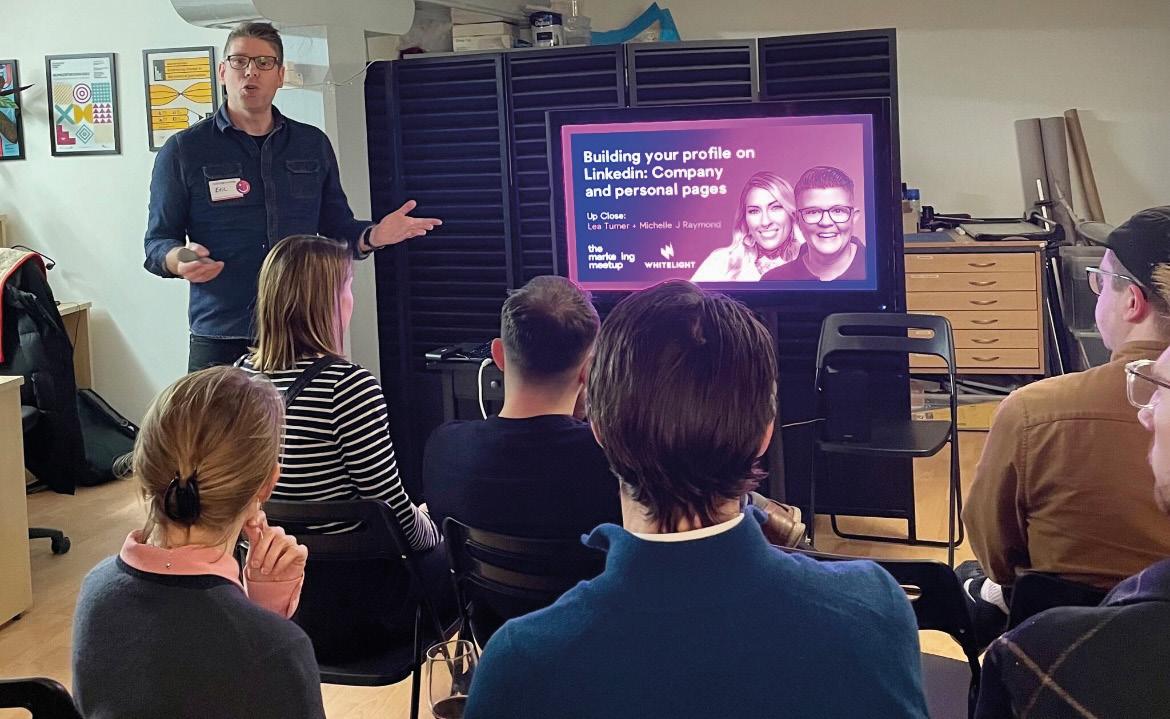
marketingmeetup.com/events
COMING UP IN 2023…
Being Freelance Meetup with Kate Toon
16th May 2023, London beingfreelance.com/community
ATOMICON
13th June 2023, Newcastle-upon-Tyne atomic.site/freelancer
Nottingham Digital Summit
29th June 2023, Nottingham
nottinghamdigitalsummit.co.uk
UK Black Business Show
7th October 2023, London
ukblackbusinessshow.co.uk
CopyCon
24th October 2023, London
copywritingconference.com

The BIG Freelancer Magazine
Christmas Party
24th November 2023, London freelancermagazine.co.uk/events
We’d love to hear about your freelancer event, help promote it or provide a little prize for it. Email abi@freelancermagazine.co.uk
85 Issue Nine // Spring 2023
The Marketing Meetup Up Close // White Light Media Collab
The Book Club: The Freelance Introvert
The joy of missing out, without missing out.
Tom Albrighton is a writer, veteran freelancer, ProCopywriters co-founder, and proud introvert. He’s authored five books covering a range of topics: freelancing, copywriting, and the joy of solitude. Tom spoke to Mel Barfield about his book, The Freelance Introvert, and how lone working needn’t be lonely.

So Tom, what made you want to write this book?
It’s the book I would’ve liked when I started freelancing. I read quite a few self-help/business books, and they were useful but all quite go-getting. I thought there was room for a quieter take, instead of the usual relentless extrovert positivity.
How has being introverted impacted your own freelance journey?
Early on I went to in-person networking. I thought I’d walk out with five new clients and ten new projects, which of course I didn’t. Now, I set manageable expectations, like just to chat with a few people. I’ve always enjoyed the more solo, retiring ways to find new business, like blogging. I don’t do so much of it now; I write books instead [books – the original extra long-form blog]. I cultivate relationships organically through the work, by giving maximum value.
What strengths do introverts bring to their freelance businesses?
The obvious strength is we’re good at working alone. I don’t know how I spent so long in the 9-5 group environment. Introverts are often self-motivated; we don’t need anyone else to get us going. We aren’t easily distracted or pushed off course by other people’s views, and we tend to think deeply and carefully before acting. That can be a downside of course if it leads to self-doubt or inaction. We’re good at listening to clients which is vital to fully understanding the brief. The typical freelancerclient 1:1 relationship tends to suit introverts well, and we’re often emotionally centred, which helps us ride out the ups and downs of freelance life.
I think a lot of people will agree about office life, “how did I endure it for so long?”. Elizabeth asks, “do you think being an introvert (as many writers are) has impacted your writing style?’
I definitely wouldn’t have written my latest book
86 Freelancer Magazine
ehT F r e e lancerMagazine
BookClub
One For Joy, if I’d not been an introverted writer. It’s all about the joy of being alone. In terms of writing style, I work on things for a long time before I reveal them. When I wrote my first book, I didn’t tell a soul – not even my family – until I’d sent it in to my editor. It was such a big deal to reveal it to anyone. That’s quite an introvert trait, to want to wait until something is absolutely ready before revealing it to anyone. I’m a self-referential, hermetically sealed writer. Very in my head, for better or worse.
Do you send out the book then go “don’t actually read it” [I’m totally projecting here]? Or do you spend so long making sure it’s absolutely right and you’re happy with it? No, I’m still ambivalent about it because if you write anything then look at it again in six months’ time, you’ll see things you want to change. That happens with books times ten.
What sorts of things might introverts do that don’t serve them well as freelancers?
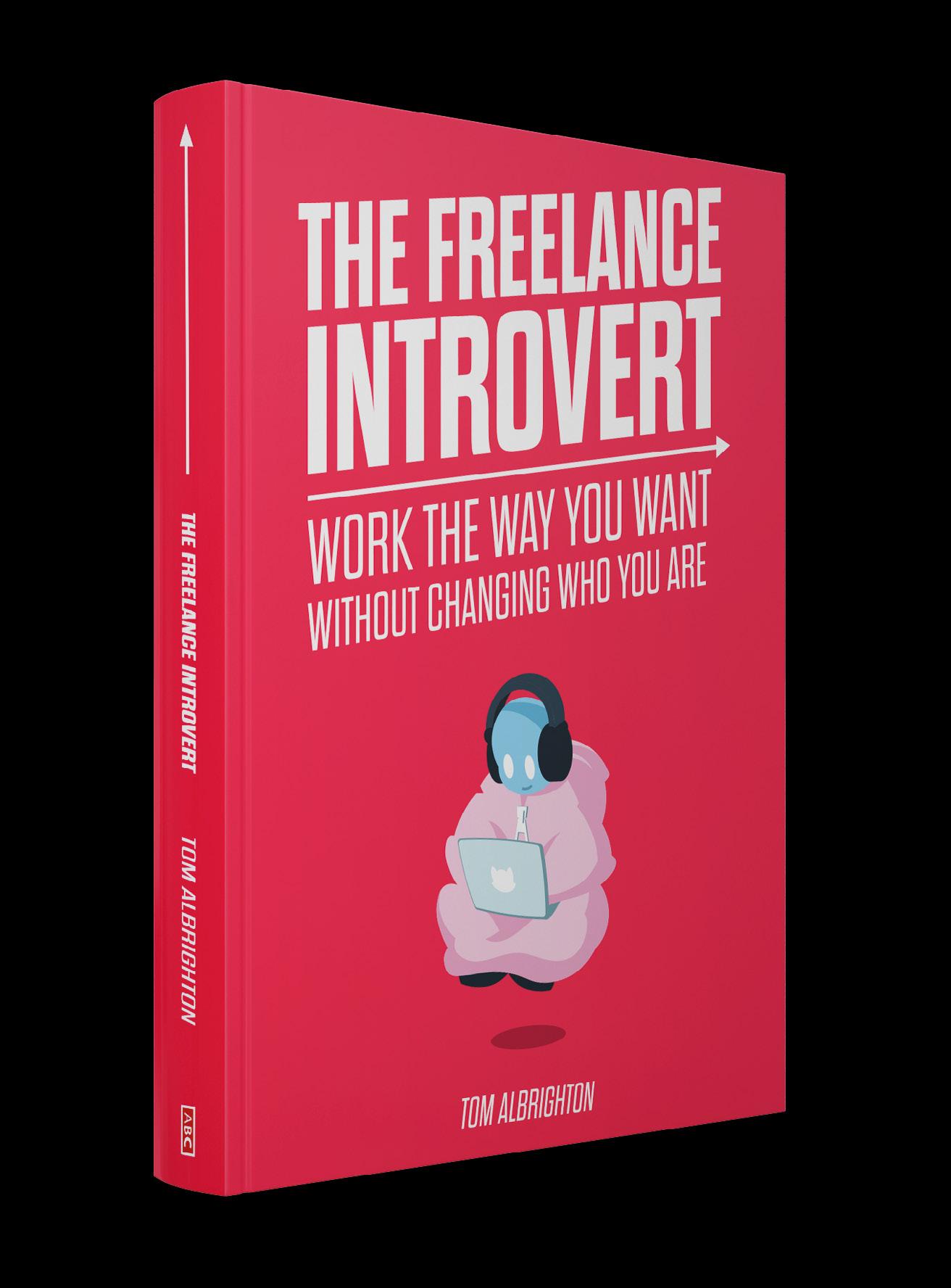
I’m generalising wildly so apologies in advance if I’m misrepresenting some introverts. But there can be a danger of being too passive,
too reactive. I started freelancing after being made redundant; I didn’t choose it. It took me a long time to get into the right mindset of thinking about what I really wanted. Related to that is worrying too much about pleasing clients. Obviously, you have to keep your clients happy. But it can go too far. Similarly, with pricing, introverts might either price too low or do too much for the fee. I shouldn’t imply that being an introvert means being low in confidence though. Those are two separate things.
How can introverts avoid burnout from overdoing it?
Know your strengths and weaknesses and don’t feel you have to be someone you’re not. Know your limits with networking and socialising, don’t do too much. But you do need some interaction and company. Even if you work on your own, don’t let that curdle into becoming overly isolated or brooding. It’s about balance.
87 Issue Nine // Spring 2023
“I’m a selfreferential, hermetically sealed writer.”
>
Carla has asked a related question, “I learn a lot from my colleagues; who do you learn from as a freelancer?”
It’s well worth trying to speak with other freelancers. If you feel odd about looking for someone in the same role, try finding someone in a related field. When I first started out, I felt quite threatened by how many other copywriters there were out there. But your competitors are your colleagues when freelancing. Have an abundance mentality; there’s lots of work out there for everyone.
Jonathan asks, “Is it possible to separate confidence in your work from your selfconfidence?”
They’re related, but you do have to separate the two. Feedback is on the work, not on you.
It’s especially difficult if you’re the kind of person who pours yourself into your work. When you submit it, you need to take a step back, put the work up on the wall and sit beside the client to view it.
You mentioned the abundance mentality earlier and you touch a little on the law of attraction in the book. But you aren’t talking magic wands and crystals. Can you tell us a bit about what you mean?
Sorry to anyone hoping it was about magic and crystals. It’s just a way of thinking. The law of attraction basically says what you focus on will become your reality. Sounds mystical but it’s just a way to focus your unconscious mind and direct your energy on to what you really want.
For introverts it’s a way to use your introspection to your advantage. You imagine the future you want in a very specific, concrete way. It could be written down, images in a vision board, or a drawing. Or exact numbers: how many clients you want or how much money you want to earn. It’s easy to set vague goals like “I want more money” or “I want more clients”. But it isn’t specific enough. What do you want your office to look like? How do you want your working day to be? How do you want your freelance work to fit with family? Use numbers and facts. Get it down on paper, put it in a drawer and consciously forget about it. You’ll be surprised that one way or another you’ll attract those things in your life.
Apparently when Jim Carrey was a jobbing actor, he wrote himself a cheque for $10million and kept it in his wallet. Worked out well for him. Can you tell us a bit about the three time horizons you mention in the book?
Yes, it’s on a similar theme to what we were just discussing about looking ahead. If you’re not careful, especially if you’re busy, you can end up locked into an eternal present just doing things all the time. [Sounds like having a toddler.]
You need to consider three horizons: hours (planning your day), days (scheduling projects), and years (longer plans). It’s nothing really radical, it’s just three time zones to bring to your work. Otherwise, if you only focus on the present hours, you end up just doing, doing, doing. Tied to your desk all the time.
Do you think introverts are generally prone to distractions?
We’re good at focus, but social media is appealing because you have interaction on tap. It can sometimes be a hazard if you rely on it too much for your social contact.
88 Freelancer Magazine
“It’s well worth trying to speak with other freelancers.”
The assumption is introverts hate company, but we don’t. We just have a threshold. Acknowledge you need some face-to-face time too and do that instead of going on social media.
How do you avoid the dreaded Time Suckers?
A Time Sucker is someone who takes up your time for an uncertain purpose, or no purpose at all. It’s hard to know how to deal with someone who monopolises the conversation, never asks you a question, and talks on and on. [I tell Tom he’s just described… erm… someone I know]

It’s nice to be an empathic listener but your time is the most valuable asset you have. You can’t let people hijack it against your will. You develop a radar for certain phrases like “pick your brain”, “I’ve got an opportunity”, “could you just have a look at this”. Anything open-ended or ambiguous can be a red flag. As a general rule the best clients know exactly what they want already.
Jonathan asks, “when people ask to pick your brains, do they sometimes feel like they could do your job?”
That’s certainly the case, especially when a potential client says, “I’d do it myself but I don’t have the time”. It can be irritating. Another one is when people ask for advice
but basically use the opportunity to offload or vent. It’s difficult when people really like to chat, so where possible, make sure your price reflects the fact there will be a bit of chatter time.
An optimist might assume, “They’re busy, they’re thinking about it. Nothing’s gone wrong yet, everything could still go right”. A pessimist might assume, “My price was too high, I’ve put them off, they just deleted my email, they hate me”. The actual event is a neutral business dealing. But we put all this stuff on it. We make it personal. It’s worth being aware of your explanatory style.
What would you say to anyone considering going freelance, who’s put off because they feel they’re “too” introverted?
A chat margin/buffer. Nice. You talk about explanatory styles in the book. Can you tell us more?
This is about how we make sense of things that happen to us. Optimists take credit for good things and blame others for bad things. Pessimists refuse credit for good things and accept blame for bad things. I’ve oversimplified but in freelance terms, say you send off a quote to a prospective client and don’t hear anything for a week. That’s a neutral event. It’s just a thing that’s happened.
I’d invite them to reflect on what their experience of work is like right now. Don’t just default to what you’ve got. Freelancing isn’t for everyone, but introverts are just as suited as extroverts. Just for different reasons. If you can make it work, you get to work in a way that’s true to yourself, which you almost certainly won’t get in a regular office environment. Even just on a sensory level, having people looking at me or listening to me feels awful now I’m used to working on my own.
Flipping it a bit, what can any extroverts reading this do to make their business dealings a bit more introvert-friendly?
On a practical level, give space and time for introverts to think and speak. In a group setting, invite quiet people to speak instead
89 Issue Nine // Spring 2023
>
“Your time is the most valuable asset you have.”
of letting the loudest ones take over. My worst nightmare is a brainstorming session where I’m asked to throw ideas out. Make sure you give ways to allow introverts thinking time. And let people use their favoured communication channel. For example, I’d only resort to a phone call if there was no alternative.
I don’t give out my phone number at all. Even if you give really clear boundaries, clients don’t always remember or stick to them.
It can also be a power play for people to impose their will on you.
Tell us about your latest book One For Joy. Give it a quick plug!

I don’t know if many people have read books on solitude, but they’re often quite solemn. It can be about prayer and meditation, but it can also be about having
a party on your own, having a bath, going into the garden. I cover some of the philosophical and psychological sides of being alone but really, it’s just a comfort read for anyone who enjoys time on their own. I do mention going to the bathroom in the book, so maybe keep a copy in the toilet.

We call it shiterature in our house (sorry to bring the tone down), anywayyyy my last question brings us back to The Freelance Introvert. What’s the headline tip you’d like everyone to remember from the book? Just remember, you always have a choice. You’re not passive, floating down a river seeing where it takes you. You have a lot more agency than you think. So, don’t be afraid to have a vision of what you really want; one way or another you can make it happen.
BookClub
I’m a freelance copywriter specialising in creative ad copy. I’m married with two daughters, living in rural Northamptonshire. When I’m not squeezing sentences to within an inch of their lives I’m dreaming about owning a campervan.

@allcopymel

90 Freelancer Magazine The next Freelancer Magazine Book Club is on Thursday 18th May at 8pm. Don’t miss Mel talking to Carina Maggar about How To Make Work Not Suck Tweet Mel your questions for Carina @allcopymel. To sign up for the Zoom call visit: freelancermagazine.co.uk/ events
Find Tom on LinkedIn /abccopywriting and visit tomalbrighton.com
ehT F r e e lancerMagazine
We bought this full-page ad to advertise our lovely marketing events and webinars. But now we’ve done that, we’ve decided to give the rest to a freelancer we love.
Hey I’m Ellie, the best Co-founder of Brand New Notebook.




I’m giving away 6 of our brand new notebooks - just scan the QR code and fill in your deets to enter.
Oh yes, advert... and we make great websites for ambitious business owners like you, who want a website that actually converts.
.
And then I decided to share the love with another freelancer I believe in.
..so TAG, Ellie!
You’re IT!
Ask Twitter

How do you feed the creative in you?
Rachel Morgan-Trimmer
@rachelmtrimmer
Haribo, mostly.
Rose Crompton
@RoseMCrompton
I write my diary. It’s the place where I let my mind wonder. Have been keeping a personal journal since I was about 8 years old and got given one as a birthday present.
Sherman Rabbit
@enbyinthecorner
For me, I have found that having multiple creative outlets within journalism helps me to keep going. Sometimes I do photography, other times videography and that drives my passion for writing. Having three outlets to bounce between has helped me not get burnt out as easily.
Amy Nolan @inkypix4u
Do something physical Look at something different Go art book hunting in charity shops
Make for making’s sake
Indulge a creative whim
Do something boring - so my mind can wander Spend time with other people who create Switch up my routine Get lost down a creative rabbit hole
Play
Fiona Sinnott
@fionasinnott
My creativity comes from finding space to daydream, firegaze or watch paint dry - take your pick! I’m also inspired by making something fresh (be it photography or writing) within strict confines, for example walking the same mile every day and finding something new in it to capture.
Len Keenan
@lenkeenan
I read autobiographies, books on Antarctic and Arctic exploration and exploration in general. I watch music and general documentaries. I listen to music and I daydream, a lot!
Dr Lily Canter @lilycanter
Showers. All my best ideas come to me out of the blue when I’m in the shower.
^ ^ Reply ▼
Nina Lenton @PenguinNina
And driving - I often have ideas when I can’t write them down!
Catherine Haywood @CatHaywood1
Coffee, lots and lots of coffee, and punctuating my week with catch-ups with other freelancers and creative bods so we can share ideas and motivate each other (usually over coffee!)
Rachelslist
@Rachelslist
I’ve nearly finished a hand-building clay course and about to sign up for Stage 2. It’s grounding, calming and makes me happy. I get to make beautiful ceramics and I’m using stamps to create funny sayings and messages on my pieces. Combining my two loves: words and clay.
Fiona Chapman @fionachapman1
Dan White @danwht
Wandering around museums and basking in the creativity and innovation that’s come from so many millions of people from the past.
Long walks to empty the noise in my head and find clarity.
92 Freelancer Magazine
Rachel @LittelBigBiz_ Chocolate raisins mostly! And then exploring. Books, Dribbble, Pinterest, outside, the world!
Amy Hawthorne @amyamyamy_____
Look at creative work that’s already out there - cool campaigns, Pinterest and Behance. Even though I write words, visuals can draw the good stuff out of me.
Laura Sutton @L_Coull
I seek out and absorb the creativity of others. Whether it’s nature, music, art, dance, poetry, writing.
Or I learn something new. I’m taking MasterClass lessons on rap, photography, and philosophy. Keeps my brain full of interesting things to make random connections between.
Melissa @mel_pud
I’m focusing right now on not cramming my days... I need space for my creative side to flourish so getting away from the laptop for plenty of breaks, walks, exercise and connecting with other people is key for me.
Ross Stevens @rossstevens_uk
Listening to a new style of music I don’t usually listen to. Something that piques my interest, pricks the ears and feels like a small rewiring of the brain has happened.
Gavin
@Gavin_Boyter
Make time to write short stories, often in a local cafe or pub.
Brian Fencl
@FenclBrian
My drawing tools are easily accessible and creativity is always ready to be explored. The challenge is to avoid the behaviours that disrupt it. Lack of sleep, alcohol, stress and even too much television or mindless social media scrolling is disruptive.
Helen Iatrou
@HelenIatrou
I get out on the water to sail to rid my brain of the cobwebs that gather when I sit too long at my desk.
Kayla @KaylaNaab
The simple answer is inspiration, but it isn’t that easy. A lot of people mistake “inspo” for anything that looks cool in your chosen industry or medium.
But no, inspiration is everywhere and best found offline, in old books, in nature, in conversation.
Observation is key!
Dan Rice
@iamdanrice
Do something interesting but not challenging. For me right now that means taking a simple cartoon image I like and tracing it on the iPad with music. If I ensure I have pen and paper next to me I can collate ideas if and when any occur but as a minimum it’s a solid thinking break.
Haroon @HaroonCreates

Hayley Maguire @HayleyCMaguire
Travel. A new horizon is always the best inspiration.
I get out for weekly nature walks. Not only is this great for my mental (and physical) health but nature’s beauty and clever creations – from bee hives to mycelial networks – are also an incredible inspiration.
I love to:
Listen to music, great albums
Watch movies
Go to the theatre
Basically, aunty Julia Cameron’s Artist Date.
I love to be around other creatives and bond over food.
93 Issue Nine // Spring 2023
Chichester Copywriter @ChiCopywriter
Boyter
The BIG Freelancer Magazine Christmas Party
An epic Christmas party for people who don’t normally get a Christmas party.
Friday 24th November, 12-6pm 19-20 Bar Farringdon, London
DJs Dom C & Mary Rose // Party food // Welcome drink // American pool team tournament // Trick shot pro coach // Party games // Arcade video games // Table football // Electronic darts // Prizes // After party
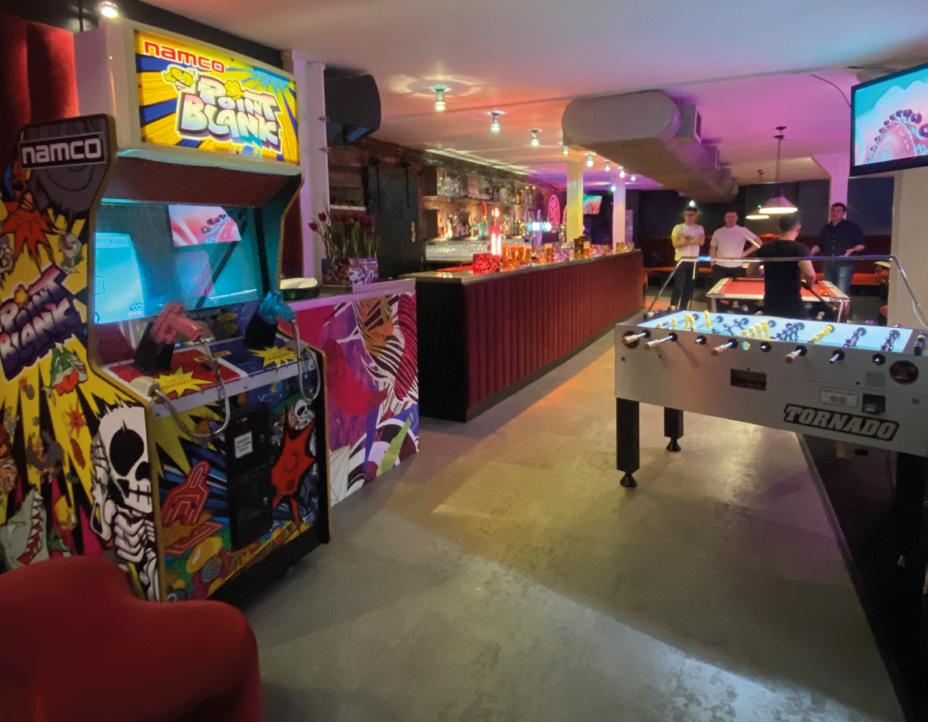
Early bird tickets are available to subscribers first via their dedicated members’ area on our new website.
If you like to move it, move it, get your tickets at freelancermagazine.co.uk/the-movement
Coworking UK Roadshow


Tuesday 9th May Liverpool with Dave Harland
Wednesday 10th May Assembly, Bradford with Penny Brazier
Thursday 11th May Cambridge with Mel Barfield


Friday 12th May Hanbury Hall, London with Angela Lyons
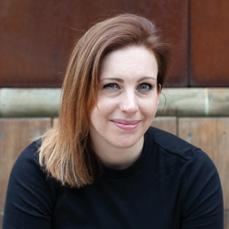
Editor Sophie has polished her van and with the help of some very special guests and venues, is touring the UK to cowork with the freelance community. Find
Monday 22nd May Bristol with Ross Jukes

Wednesday 24th May Exeter with Graeme Piper

Freelancer Magazine 94 freelancer MAGAZINE
Events 2023
more details and register to join us at freelancermagazine.co.uk/events
“Spacesarelimited.”
Virtual Coworking for Freelancers
Every Tuesday, Wednesday, Thursday
9.30am-11.30am UK time on Zoom
Register at freelancermagazine.co.uk/events

Introducing your Virtual Coworking Hosts…
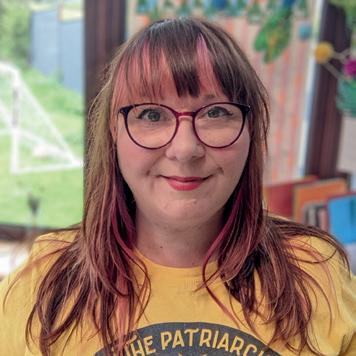










3 times a week

95 Issue Nine // Spring 2023
Tim Bond
Tom Garfield
Berenice Howard-Smith
Ece Kurtaraner
Angela Lyons
Ben McKinney
Meadhbh Hand
Molly Scanlan
Toks Coyle
Alana O’Regan
Lenka Koppova
Abi Sea
Create more energy
A creative freelance life is beautiful and rewarding: giving you more time, money, and freedom.

I work with creative people to create change in their business, helping them to: build confidence overcome burnout reach their goals
When everything is balanced, you have focus and clarity. Creativity will flow, and you will love your business.
Find out how to work with me at www.vickilovegrove.co.uk

Jo Watson’s ‘We Were All Thinking It’…
Am I even a copywriter if I don’t weigh in on ChatShit or whatever this latest AI copy-bot thing is called?
I’m a bit of a lazy bitch, so I can’t claim I’ve in any way looked into ChatGPT, much in the same way as I’ve been completely apathetic to other ‘advances’ in tech that didn’t personally serve me any purpose or bring me joy. Crypto, Clubhouse, air fryers, etc.
Having said that, I will admit that bringing AI into the world of my beloved copywriting craft does terrify me, but not because I’m scared I’ll never be hired again or that it’ll massively lower standards in our industry (even though both are more than likely).
I’m terrified because I’ve seen too many instances where replacing humans with tech has led to terrible, terrible consequences. If you’ve ever found yourself doom-scanning at the selfcheckout in the local supermarket, then you’ll know what I mean.
Let me paint you a picture, but warn you that this story may trigger PTSD. Post Traumatic Shopping Disorder.
My husband, Steven, is the most mildmannered man on the planet. The only time I’ve ever witnessed him publicly lose his shit was at the self-checkout at Tesco, when he made the divisive decision
to choose machine over man to settle our weekly shop. In what can only be described as a clusterfuck, Steven and I quickly found ourselves trapped in a world where unexpected items were both simultaneously present and missing from the bagging area.
Bags of small brown onions scanned through as indulgent sherry trifles, nonbio washing tabs refused to be scanned at all, and formal proof of ID was somehow needed for the purchase of easy-peel satsumas. Promises of sale items and discounts so prevalent on the shelves were seemingly rescinded at the till, and the list of reasons to (ironically) call for human assistance far outnumbered the items on the list we’d taken shopping in the first place.
My claim of “I told you these things are shit” was apparently an unhelpful interjection, and I was angrily banished to the magazine section.
I was merely pages into a copy of The Beano when a cry of “IT’S A RED FUCKING PEPPER!” soared from my lover’s usually soft-spoken lips and bellowed its way audibly across to my haven at the kiosk. The fact that nobody
else batted an eyelid in response just shows you how much of a regular occurrence these outbursts must be.
Technology has the capability to take the emotion out of tasks – which is massive for business efficiency - but when it doesn’t bloody work it causes frustration, and this adds the emotion right back in there. Tenfold. Just ask my soon-to-be ex-husband.
Am I terrified that tech will take our jobs? No. I’m terrified it’ll take our sanity.
I’m not one to catastrophise, but the red fucking pepper is specifically cited on our divorce papers, so make of this what you will, when you choose to have your content written by a computer. Ask yourself if it’s really worth the emotional bagging.


Sorry, baggage.
(Shout-out to my fellow Freelancer Mag compadre, Ed, who suggested I called this piece ‘Unexpected Item in the Blogging Area’. I’d love to see ChatGPT come up with that level of quick-witted bantz and punmanship!) ● jo-watson-agoodwriteup
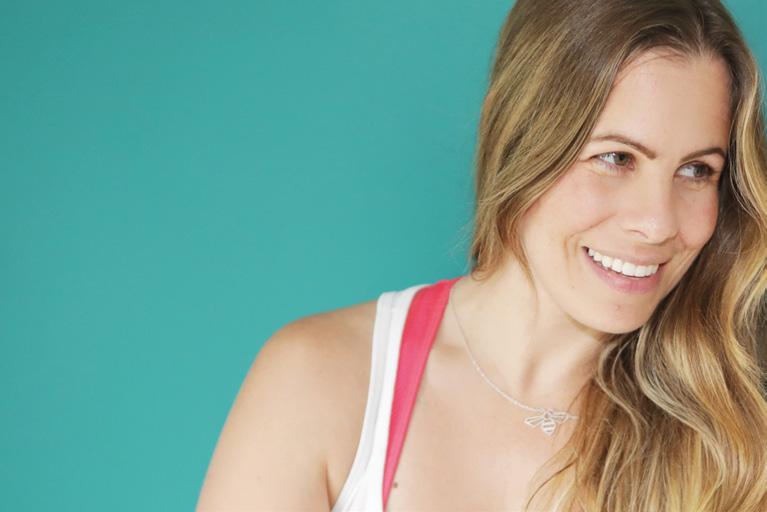
97 Issue Nine // Spring 2023
COMING UP Issue 10 | July 2023
We welcome our second-ever Guest Editor…
Tori Beat
And her winning theme…
All Change - Making Big Switches
The Tipping Point For Change // Exploring How Your Identity is Attached to Your Career // Dealing With Grief as a Freelancer // Issue 10 Playlist �� // Coworkers �� //


Freelance Events and Meets Ups // Top of the Shops // A Day in the Life of… Helen
Bryce (Nelly) (Guilty Mothers Club) // What We’re Listening To // What We’re Reading // What We’re Learning // Newsletter Love �� // So You Want to be an… Ice Cream
Van Person // Freelancing with a Family in the Summer Holidays // The Freelance Book Club - How Not To Make Work Suck // Physical Health // Mental Health // Money //
Freelancer Stats // The Freelance Doodler // Food // Moving Your Business Abroad // Your Messages and Freelance Wins // Do Give Up Your Day Job
Advertising booking deadline for Issue 10: Friday 9th June 2023 (or when fully booked) freelancermagazine.co.uk/advertise




99 Issue Eight // Winter 2023 Every three months Subscribe now freelancermagazine.co.uk/shop Plus post and packing costs. Delivered worldwide. Choose from print or digital. £10 Subscribe MAGAZINE freelancer For a freelance life less ordinary Subscribe and get access to our exclusive Members’ Area - ‘The Movement’ with exclusive events, resources and offers for freelancers.

GBP £12.00 @freelancermag @FreelancerMagz freelancer-magazine

































 Giada Nizzoli, Copywriter
Giada Nizzoli, Copywriter



























































 By Sophie Cross Connect with me on LinkedIn and read my LinkedIn article giving the full lowdown about my first 12 Hour Walk. /SophCross
By Sophie Cross Connect with me on LinkedIn and read my LinkedIn article giving the full lowdown about my first 12 Hour Walk. /SophCross
























































































 Laura Burrows, Content & Copywriter /laura-burrows11
Laura Burrows, Content & Copywriter /laura-burrows11



 Murphy Stitch
Luna
Murphy Stitch
Luna

























 By Natalie Lue Harper Horizon
By Natalie Lue Harper Horizon








































































